Connect, discover, stay up-to-date
3/2024
▶ Special topic: Lab Management
10 things you should know about PFAS
Revolutionizing myopia management
Generation Z
▶ Technology
A state-of-the-art technology for photochromic lenses
▶ Spotlight
Audio glasses: What you see is what you hear
▶ Live on site
A visit to Optovision in Langen (Germany)
▶ Market Surveys Generators
OPHTHALMIC LABS & INDUSTRY

HSC m dulo
From the freeform pioneers comes a new one-of-a-kind generator that excels on every level. With an added performance of more than 50%, HSC Modulo ONE is not just a little bit better but a revolution. It is virtually the power of two generators in ONE and forms the very heart of the Power Lab of the Next Decade – Modulo ONE.
What makes HSC Modulo ONE so exceptionally fast? It is built on a brand new kinematic concept facilitating even faster process times. The high-performance generator relies on the proven two-motor concept featuring the most powerful XS-Tec motor for maximum dynamics and highest quality. The proven RS-Tec motor is known for its high robustness and provides added versatility. A new ultra-fast workpiece changer transfers the lenses and facilitates shortest chip to chip times. The result is insane generating speed and performance at the same great lens quality you know from SCHNEIDER generators.
Ultimately, HSC Modulo ONE provides significantly increased throughput in an even smaller footprint than before. Get the power of two generators in ONE.
ISSN 1614-1598 66527 Volume 20
Eyepress Fachmedien GmbH Saarner Str. 151 45479 Muelheim a. d. Ruhr 66527 Germany
Drastic throughput increase Lowest cost per lens Highest uptime www.schneider-om.com
VIRTUALLY THE POWER OF TWO GENERATORS IN ONE
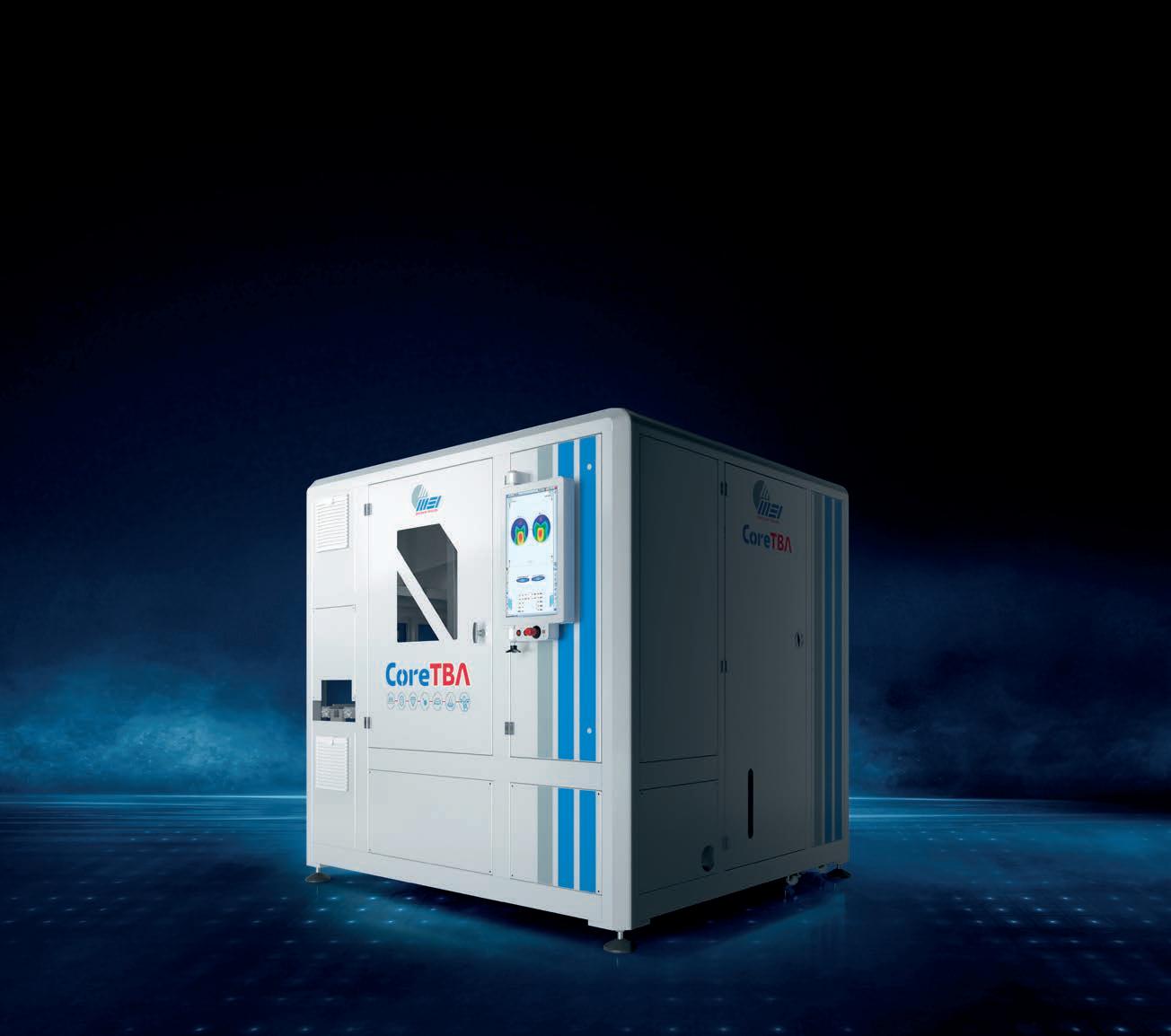
 Hanna Diewald Chief editor
Hanna Diewald Chief editor
Tell us your opinion, ideas and suggestions: hanna.diewald@mafo-optics.com
The focus is shifting
For many years, there seemed to be just one main topic for the research and development departments: working on the best possible progressive lens design – as individual as possible and with the least possible abberations. Freeform technology made possible what previously had been impossible. In fact many of the successes are impressive! But over the years some opticians found it irritating when yet another manufacturer promised to have come up with the most compatible and best ever design; which unfortunately only customers with high incomes can afford.
So it is no wonder that developers have recently turned their attention to completely new target groups and lenses – at least in Europe – namely children. They are now focusing on myopia management and on the fundamental question of whether myopia should be seen as a disease that needs to be counteracted or considered merely as a prescription issue.
There is now a wide variety of lenses on the market that aim to slow down myopia – and new ones are constantly being added. In addition to semi-finished products with a special structure offered by individual manufacturers, freeform technology is now also becoming increasingly interesting in this area.
Starting on page 14, we look at a design that has been tested in European studies and can be produced by independent manufacturers using the freeform process.
We also look at the consequences of such a huge country as the USA having as yet no approved spectacle lens for myopia management, due to the lengthy certification processes. The interview with Dr. Ashley Tucker can be found on page 18.
But the industry also seems to be becoming more diverse and creative on completely different levels. Rodenstock, for example, is now offering the ColorMatic photochromic lens technology as an independent technology brand (page 22). Thus labs now have a larger selection of photochromic semi-finished products available to them.
And the industry giant EssilorLuxottica will soon be venturing into a completely new field: hearing solutions. With its new audio glasses the company wants to tackle two deficiencies with a single product; and it is putting out feelers in a market that is chronically underserved worldwide (page 26).
At the same time, developers are facing other huge challenges. The proposed per- and polyfluoroalkyl substances (PFAS) ban in the USA and in Europe could call for a great deal of creativity, in order to produce PFAS-free products with optimal properties.
Thus research and development is unlikely to be boring for the foreseeable future. However, even if other target groups and spectacle lenses do set the agenda for a while, at some point no doubt opticians will be pleased to see the focus return to the latest progressive lens designs once again.
MAFO 3-24 3 LETTER




MAFO 3-24 5 MAY / JUNE 2024 MAFO issue May / June 2024 Content Topics in this edition At a glance 6 All about you News from the international ophthalmic industry 7 All about markets Infographics 8 All about products Innovations and products for your lab 45 Suppliers Guide 49 Outlook Spotlight 10 10 things you should know about PFAS 18 Every diopter counts ‒but what to do when the aids are missing? An interview with Dr. Ashley Tucker Technology 14 Revolutionizing myopia management By Eva Chamorro and Jose Miguel Cleva 22 A state-of-the-art technology for photochromic lenses By Franz-Josef Achatz 26 What you see is what you hear By Hanna Diewald Live on site 30 A visit to Optovision in Langen By Hanna Diewald and Daniel Groß Business 34 Generation Z What awaits the labor market? Survey 38 Generators History 48 Visual acuity testing on a beer mat By Dr. Hans-Walter Roth Page 14 Page 26 Page 30 Special Topic Special Topic Special Topic Special Topic
All about you
News from the international ophthalmic industry
Xavier Maillard is the new Head of Region EMEA & India at Satisloh
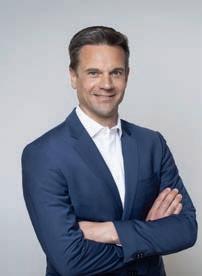
Machine manufacturer Satisloh announced a leadership change in the region EMEA and India. Pascal Elsener, former Head of Region EMEA & India, is leaving the company and is succeeded by Xavier Maillard, the new responsible for the region.
With a mechanical engineering background and 25 years of experience in supply chain and sales management roles in the ophthalmic industry in Germany, France, and Switzerland, Xavier brings a wealth of knowledge and expertise to his n ew position. His journey with Satisloh began in 2009 w ithin the EMEA Sales organization, managing different sales areas and key accounts. Xavier has also been a driving force in building Satisloh´s CPO (Certified Pre-Owned) business, leading the global activities since 2017. I n 2020, Xavier was appointed Territory Director and since 2023, he holds the position of Deputy Head of Region in charge of Equipment.
Coburn Technologies welcomes back Jason Frank as National Sales Manager – Coating Products
Coburn Technologies has welcomed Jason Frank back to their US sales team as National Sales Manager – Coating Products. Many in the optical industry are familiar with Jason, as he was the Sales Manager for Latin America and Florida at Coburn Technologies in recent years. Since then, Jason has continued to work in sales roles within the optical industry.

Prior to Coburn, Jason held Sales Management and Leadership positions at Essilor and Hoya, both in the US and internationally. Most recently he worked as the Sales Director – Latin America & Special Markets with East Optical prior to returning to Coburn in the US.
Ocuco User Group Meeting 2024
Ocuco gathered over 55 customers and industry partners for its Innovations User Group Meeting 2024 “Seas The Day”, held from April 11 to 13, 2024, at the Sheraton Sand Key Resort in Clearwater, Florida, USA. The event brought together optical lab professionals for three days of education and networking.
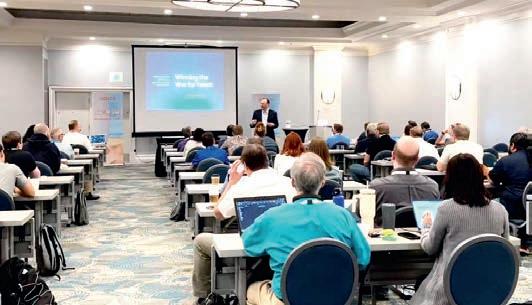
The meeting featured almost 30 workshops and presentations on topics such as innovations and lablink development roadmaps, strategies to enhance online presence, and specialized personnel recruitment. Highlights included the opening keynote, “Winning the War for Talent,” by resource management specialist Mike Karlsrud, and “Optical Insights: A Deep Dive into Lens Consumer Behavior” by Alysse Henkel, VP of Insights at The Vision Council.
Nearly 100 optical industry executives met for The Vision Council’s Lab Leadership Forum
The Vision Council successfully hosted the 2024 Lab Leadership Forum on Thursday, April 11, and Friday, April 12, 2024, at the picturesque Temecula Creek Inn. This exclusive event saw a gathering of nearly 100 optical industry executives, providing a platform for education, networking, and recognition among optical laboratory professionals.
The Lab Leadership Forum, tailored specifically for The Vision Council’s optical laboratory members, offered a comprehensive agenda aimed at fostering professional growth and collaboration among industry peers. An important item on the program was the posthumous honoring of Steve Sutherlin with the 2024 Goodfellow Award during a poignant ceremony.
You have news for the ophthalmic industry? Submit your press releases to: hanna.diewald@mafo-optics.com or constanze.classen@mafo-optics.com MAFO 3-24 6 INTERNATIONAL NEWS
All about markets
Graphical data
According to The Vision Council´s inSights research report, 36% of adults admit to using their shirt or another clothing item to clean their glasses. A practice that is not recommended by eyecare providers.
Where women are most likely to be your boss
Countries with the highest share of managers who are female
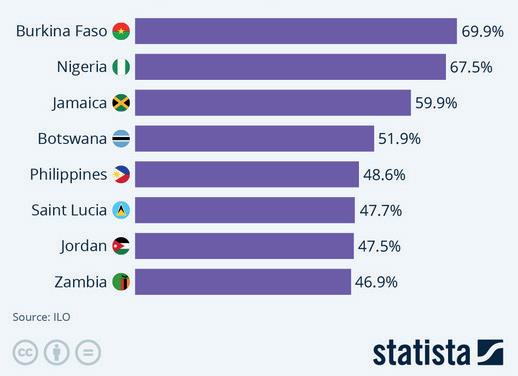
Prescription eyeglasses maintain the most likely to be purchased in-person at 85%
with non-prescription reading glasses and sunglasses following closely at 79% and 77% respectively, says the inSights research report by The Vision Council.
According to a report by the industry association Euromcontact, the wholesale sales of soft contact lenses in a group of 11 European countries increased by 3.7%
year-on-year to €1,755 million in 2023. Although sales also fell in individual countries.
People working in Burkina Faso, Nigeria and Jamaica are most likely to have a female boss. This is according to data by the International Labor Organization. Source: statista.com/chart/3132/where-are-womenmost-likely-to-be-your-bos/
MAFO 3-24 7 INTERNATIONAL NEWS
All about products
Innovations and working materials for your lab

CoreTBA:
The Block-less Freeform lens production system by MEI CoreTBA is the perfect solution for the entire digital lens generation process. This fully integrated equipment represents a game changer in the industry and a revolution in the surfacing field. With its Block-free system, for the first time in history, labs can avoid using tapes, blocks, and wax, or Alloy. This means that it’s not necessary to have taping, de-taping, blocking, and de-blocking machines in the production line anymore. Moreover, with its Dry Cut technology, the CoreTBA doesn’t need a water filtering system, which helps you save money and protect the environment. All processes, from the digital generation to engraving, polishing, and washing, are integrated into one unit with the smallest footprint on the market. In order to achieve a short machining cycle, all processes occur in parallel, and every section of the unit is fed by a tray conveyor system and digitally controlled loading arms. Visit www.meisystem.com
Coburn Introduces New Digital Lens Processing Platforms
Coburn Technologies, a leading provider of ophthalmic lens processing systems and ophthalmic instruments, in continuation of their dedication to advancements in eyecare, has introduced new technology to kick-off their 70th anniversary. The NEXUS Digital Surfacing System leverages the technology in the acclaimed Cobalt Digital Lab to produce high quality digital RX lenses. The system includes the NEXUS DGT Digital Lens Generator and the NEXUS DP Digital Lens Polisher. Each system represents a significant upgrade from its predecessor. “The Cobalt Surfacing System was introduced in 2018 and over the years we saw an opportunity to design an even better platform which we have now delivered in the form of the NEXUS system,” stated Coburn Technologies, President, Alex Incera. “This result was years in the making to ensure we could deliver an even higher performance system.” Labs can expect a processing speed that is 50% faster than the Cobalt NXT Lens Generator. Visit www.coburntechnologies.com


Advertisement
VISIT THE NEW WEBSITE Your trusted source in ophthalmic optics OPHTHALMIC LABS & INDUSTRY VISIT US ONLINE NOW: WWW.MAFO-OPTICS.COM MAFO 3-24 8 INTERNATIONAL NEWS



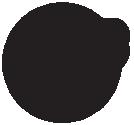

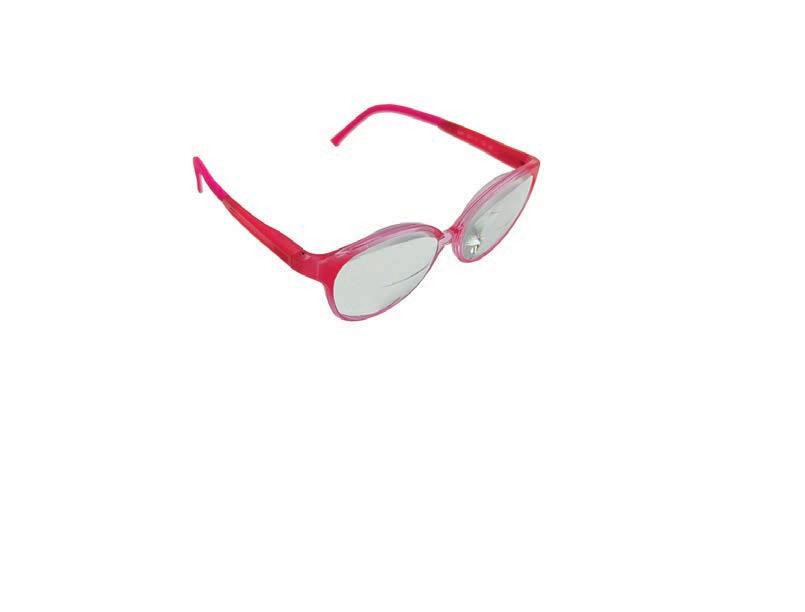

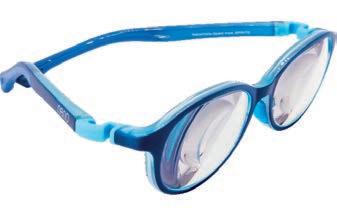



The regulation of “Forever Chemicals”
In 2023, the much-discussed ban of approximately 10,000 substances so called PFAS (per- and polyfluoroalkyl substances) already made big waves in the European Union. Now there are also initial plans to regulate PFAS in the USA but the potential ban is polarizing. On the one hand it is about protecting people and the environment, on the other hand a blanket ban would affect thousands of everyday items and processes, some are even vital. Be it medical products, refrigerators or heat pumps. Many details about the ban on “Forever Chemicals” are still unclear ‒including the extent to which the laws will later affect ophthalmic products in general and specifically medical devices. However, 10 interesting details about PFAS and their regulation can be found here.
What are PFAS?
10 things you should know about PFAS 1.
PFAS are a group of substances that comprises an estimated number of more than 10,000 different substances. PFAS do not occur naturally and have only been produced and used since the late 1940s. Chemically speaking, the organic compounds consist of carbon chains of different lengths in which the hydrogen atoms are completely (perfluorinated) or partially (polyfluorinated) replaced by fluorine atoms. Those chains of linked carbon and fluorine atoms are among the strongest bonds in organic chemistry. This is where the name “Forever Chemicals” comes from. PFAS are extremely durable and do not simply degrade in the environment. However, it is precisely this durability and special properties that make PFAS interesting for many products.
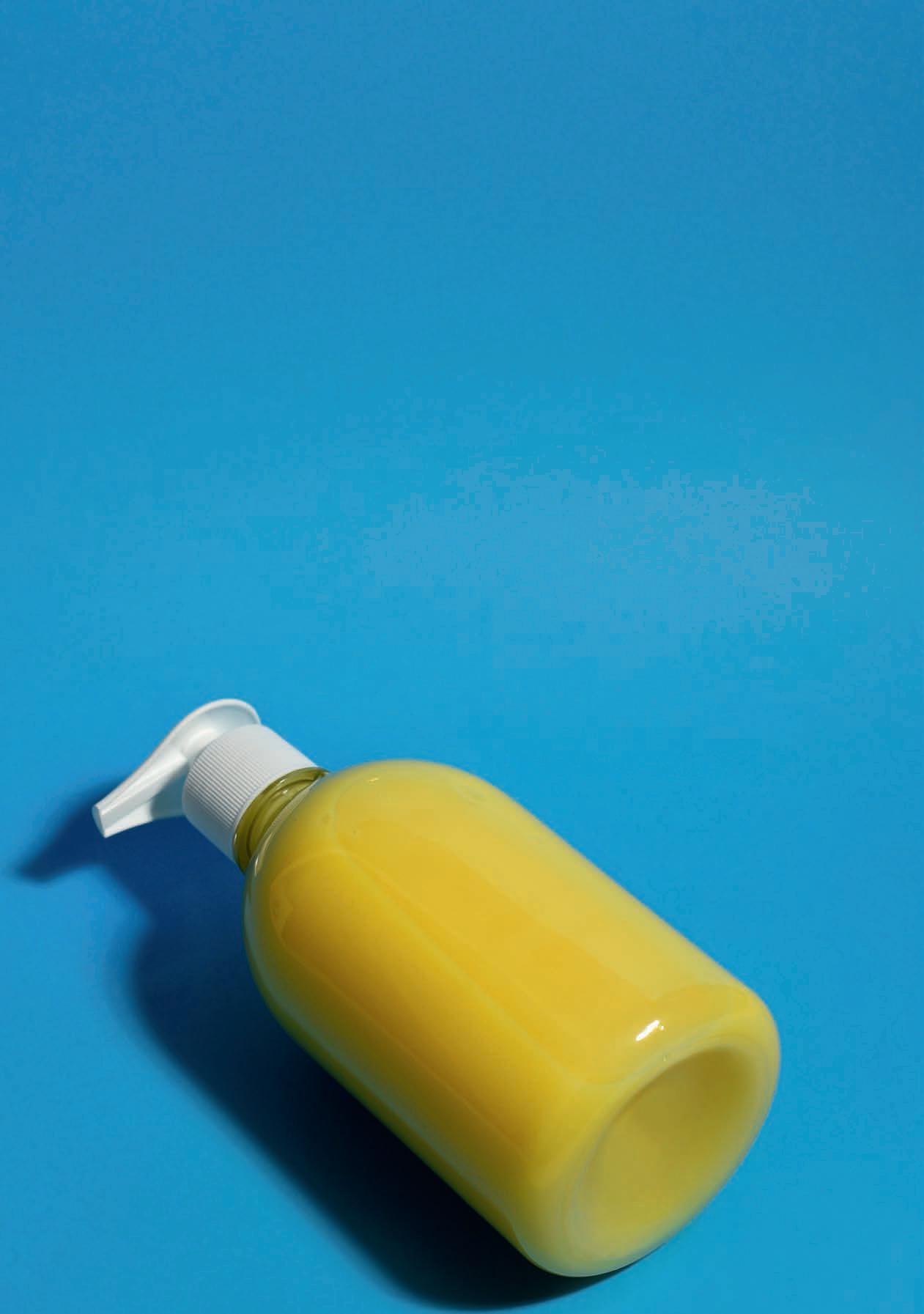

Lab Management
MAFO 3-24 10 SPOTLIGHT
2.
Best-known representatives of the PFAS group
The best-known representatives of the PFAS-group are PFOS (perfluorooctane sulfonic acid) and PFOA (perfluorooctanoic acid). They have been produced and used since the 1950s. Most toxicological and other scientific information is available on these two substances.
For some time now, other PFAS have been increasingly used. The latest generation of PFAS are, for example, ADONA and GenX, so-called perfluoroethers, in which the fluorinated carbon chain contains bridges of oxygen atoms. There are also PFAS that contain chlorine atoms as well as fluorine in their structure.
For most of the newer PFAS, authorities and scientists have little information on the exact chemical structures, the behavior of the substances in the environment and effects on humans.
In which products do PFAS occur?
3.
In general, PFAS can be found in a wide range of different products, both in industry and in consumer goods. Due to their special properties such as stability as well as water, grease and dirt-repellent properties, they are in demand in many products. These include pans, shampoos, baking paper and dental floss, but also medical implants or heat pumps – this list could be continued endlessly. In production processes, they are used especially under extreme conditions. To what extent ophthalmic optics products are concerned, is still being evaluated. For example if PFAS are used in lens blanks or anti-reflective coatings. But it is very likely that PFAS are a common component of hydrophobic and super-hydrophobic coatings, of anti-fog sprays and hard contact lenses. For many manufacturers of these products, it is still unclear how the corresponding material properties could be produced without the use of PFAS.
4.
Accumulation in soil, water and humans
But the special properties of PFAS pose problems. Due to their longevity PFAS have continued to accumulate in soil and drinking water worldwide. Therefore the substances enter the body of humans via drinking water and food where the PFAS can bind to proteins in the blood, liver or kidneys and thus accumulate in the body. In various studies, on different places in the world, PFAS were detected in the blood of nearly all study participants, sometimes even in 100% of the participants.
Scientists have tested children and adolescents throughout Europe for their exposure to various chemicals, including PFAS. The concentrations found exceeded the critical weekly dose suggested by the EFSA by a factor of a thousand. The compounds PFOS and PFOA had accumulated to a high degree in the blood of the study participants.
What is the problem with PFAS?
5.
PFAS are not acutely toxic chemicals. Using a Teflon frying pan or wearing a Gore-Tex rain jacket is not dangerous at first, but the accumulation in the body via water and food. For most representatives of the substance class, there are no reliable studies on health consequences so far. However, it is known that some of them are definitely harmful to health but it is difficult to assess how dangerous PFAS really are in their entirety because the substance class contains a large number of compounds. Today, science is already aware of some very serious consequences that can result from long-term exposure to some PFAS. Long-chain PFAS in particular, such as PFOS, PFOA, PFHxS and PFNA, remain in the human organism for a long






Advertisement
Lab Management
TOOLING ky diamond.ca ULTRA PRECISION DIAMOND TOOLS FOR ANY GENERATOR EXCELLENT SERVICE QUICK
SPOTLIGHT
SPECTACLE LENS
TURNAROUND

time after ingestion. They do not accumulate in fatty tissue, but in organs − for example in the liver − and in the blood, where they bind to blood proteins.
Studies on larger populations indicate that certain PFAS can damage the liver, the hormonal and immune systems, disrupt fat metabolism, impair the effect of vaccinations, result in lower birth weight, reduce fertility or cause cancer. Babies absorb the substances both via the placenta and later via breast milk. This is why their use should be regulated in some countries. By the way: some PFAS have already been banned in the USA and the EU for some time but not all of them.
6.
Current situation in the USA
The legal situation in the USA is currently very confusing, as the individual states sometimes set different requirements than the United States Environment Protection Agency (EPA). However, EPA recently implemented what is called reporting and recordkeeping requirements for PFAS.
“EPA is requiring any person that manufactures (including import) or has manufactured (including imported) PFAS or PFAS-containing articles in any year since January 1, 2011, to electronically report information regarding PFAS uses, production volumes, disposal, exposures, and hazards [...] Any entities, including small entities, that have manufactured (including imported) PFAS in any year since 2011 will have 18 months following the effective date of this rule to report PFAS data to EPA. Small manufacturers (as defined at 40 CFR 704.3) whose reporting obligations under this rule are exclusively from article imports will have 24 months from the effective date of this rule to report PFAS to EPA,” says the EPA website
According to The Vision Council there might be one good news, because “Not all products will be covered. Products regulated by agencies other than the EPA are exempt from Toxic Substances Control Act (TSCA)
For example, medical devices and drugs regulated by the U.S Food and Drug Administration are exempt from the EPA’s laws. The FDA, however, does regulate materials in medical devices for biocompatibility so a possible scenario where the FDA uses its laws to recall medical devices containing PBTs or PFAS is not too unreasonable.”
Current situation in the EU
7.
In the European Union, the European Chemical Agency (ECHA) evaluation is currently being carried out by the ECHA Scientific Committees for Risk Assessment (RAC) and Socio-Economic Analysis (SEAC). The evaluation is divided into sectors of use. As soon as the scientific evaluation by RAC and SEAC has been completed and the comments on the dossier have been adopted, these are forwarded to the European Commission together with the revised dossier, the comments and feedback on the comments. The Commission will then decide together with the EU Member States on a possible restriction.
8.
Criticism of the blanket ban
Some industry representatives criticize that a general ban makes little sense. Instead, it should be looked at where PFAS could realistically be replaced and where the greatest risks exist. In addition, a pending PFAS ban currently makes it impossible for the industry to make medium and long-term product plans.
The German industry association Spectaris warns that the PFAS ban could become a high-tech ban. “PFAS are indispensable for many industrial processes. Nevertheless, the EU has come out in favor of a blanket ban on around 10,000 PFAS substances because some of them are harmful if they are released into the environment. This comprehensive regulatory approach jeopardizes entire production processes in the Spectaris industries and is not sufficiently scientifically sound. A blanket ban on PFAS makes the use of indispensable high-performance materials impossible in many cases and massively jeopardizes technological sovereignty and security of supply in the EU,” stated the industry association.
Good news – plasma destroys PFAS
9.
Researchers are now working at full speed to find alternative solutions. For example on processes that might remove PFAS from the water.
At the Fraunhofer Institute for Interfacial Engineering and Biotechnology, a method for degrading PFAS from real water samples was developed. In the project, supported by the Federal Ministry of Education and Research of Germany, an atmospheric pressure plasma was used. The results showed that it was possible not only to reduce the total concentration of PFAS in the water but also to demonstrate the chainshortening required for mineralization.
10.
Functionalization of survaces to avoid PFAS
Of course, it would be best to avoid PFAS from the outset. One possible approach is the functionalization of surfaces. A source of inspiration for functional surfaces is nature.
Sharkskin, for example, has a serrated surface that reduces flow resistance and at the same time prevents barnacles from settling. The start-up Surfunction has set itself the goal of transforming such natural phenomena into industrial solutions. Using a special laser process, a wide variety of surface structures can be created.
Lab Management MAFO 3-24 12 SPOTLIGHT








HARD COATING AT BEST PURE TECHNOLOGY

The fully automated CDS 1000 is the most reliable hard coating machine. Producing up to 160 lenses/h, it is a perfect fit for medium and large size labs. It features six cleaning tanks and offers continuous and fast processing without any batching. Varnishing takes place by thermal polymerization. An automatic refill system provides consistent and stable process control - keeping detergent and varnish tanks at the same level and condition. A unique water cascading and filtrating system enables city water savings up to 75%, making the CDS 1000 an environmentally-friendly coater. Technique.

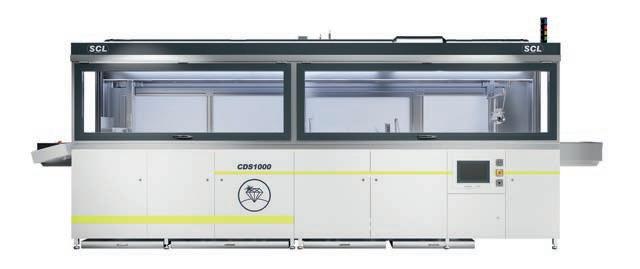

Safety. Expertise. www.scl-intl.com HARD COAT LEADER HARD COAT CLEAning TinTing PERiPHERALs ExPERTisE
CDS 1000

Revolutionizing myopia management
A novel approach to treating children’s myopia
The global surge in myopia prevalence has raised concerns among practitioners, driving the need to develop effective myopia management solutions. A lens with asymmetric myopic peripheral defocus (MPDL) has been specifically designed to address the problems related to progressing myopia which fully corrects the refractive error at the fovea while inducing a myopic defocus on the peripheral retina. Furthermore, this design is produced by means of freeform technology, eliminating the need for special semifinished products. By Eva Chamorro and Jose Miguel Cleva
The efficacy of this myopia management lens has been evaluated in the first randomized, double-blind study carried out, specifically in a European population. After 12 months of follow-up, the study demonstrated a remarkable 39% reduction in axial length progression, distinguishing this solution from conventional single vision lenses.
In this article, this pioneering solution that utilizes freeform technology is presented with a full explanation of its lens geometry, the fundamental theories of peripheral positive/myopic defocus and asymmetric defocus
as well as the clinical trial that shows the efficacy and wearer satisfaction of this solution.
Myopia prevalence is growing Myopia is expected to become one of the leading causes of permanent blindness in the world. It is well-known that myopia prevalence is growing at an alarming rate all over the world. According to the Myopia Institute, five billion people will be myopic by 2050, and 20% of them will become highly myopic (higher than 6.00 D) with a greater risk of
Lab Management MAFO 3-24 14 TECHNOLOGY

experiencing structural changes in the eye that can cause significant visual disability.[1,2]
Eye care professionals around the world are concerned about the significant increase of the global prevalence of myopia and potential consequences, leading to an increased interest of practitioners to implement myopia management solutions in their routine practice. Currently, there are some treatments available that may help to reduce myopia progression, such as spectacle lenses, contact lenses, orthokeratology, or eye drops. However, there is a special interest in spectacle lens options for myopia management because of their ease of use, easy acceptance by wearers, and their lack of health-related side effects.[3]
The asymmetric myopic peripheral defocus lens
IOT has developed a lens with asymmetric myopic peripheral defocus (MPDL) that has been specifically designed to fully correct the refractive error at the fovea while inducing a myopic defocus on the peripheral retina to help slow the progression of myopia in young patients. This defocus is achieved by a carefully designed distribution of positive power at the lens periphery that consider the morphological characteristics of the myopic retina intended to reduce myopia progression. The characteristics of these spectacle lenses design align with the theory of creating simultaneous myopic retinal defocus during both distance and near viewing.
In uncorrected myopic eyes, images are formed in front of the retinal plane, leading to blurred vision. To correct myopia, standard single vision negatively powered lenses are prescribed to shift images onto the retinal plane. However, the peripheral defocus theory suggests that the use of standard single vision lenses results in images falling behind the retinal plane in the peripheral retina (instead of on the retina). Different studies have hypothesized that inducing peripheral hyperopic defocus, as standard single vision lenses do, provides a stimulus for axial elongation and the consequent progression of myopia. Also, experiments in animals have shown that myopic defocus induced with positive power in the peripheral retina reduces axial elongation.[4]
For that reason, the lens with MPDL technology has been specifically designed to fully correct the refractive error at the fovea while inducing
a myopic defocus on the peripheral retina. Furthermore, it is well known that the retina is asymmetrical. Differences between nasal and temporal retinal hemifields have been found regarding anatomical neural characteristics, peripheral refraction, and axial growth.[5-7]
It has been suggested therefore, that sensitivity of the retina could be different between the nasal and temporal hemifields[7] with the nasal half of the retina being more important when considering the mechanism driving eye growth in the presence of hyperopic defocus[7] as is the case with standard single vision lenses.
Power distribution
Following these principles, the power distribution of the lens with MPDL technology consists of a blur-free small area around the optical center providing clear and sharp central vision. The area has an ovoidal shape, with horizontal size of 7 mm and with a larger vertical dimension extending to the upper part of the lens to achieve the best balance between the treatment region and the central correction area. The central area is surrounded by a progressive power distribution whose defocus level is modulated for the different retinal areas, with different addition power between the different regions of the lens: addition of +1.50 at 25 mm nasally, +1.80 D at 25 mm temporally, and +2.00 D at the bottom of the lens.
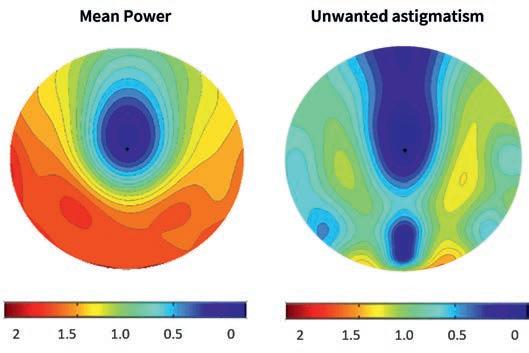
Lab Management
Fig. 1: Central and peripheral focus of an uncorrected myope, a myope corrected with standard single vision lenses and a myope corrected with a myopia management spectacle lens based on peripheral defocus theory.
MAFO 3-24 15 TECHNOLOGY
Fig. 2: Power distribution maps (spherical equivalent and cylinder power) for a plano prescription of the design of ophthalmic lens with MPDL technology.
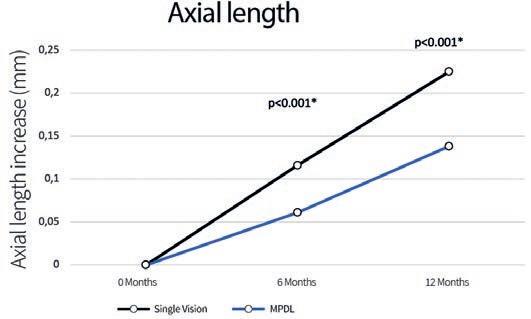
Additionally, thanks to the positive progressive power defocus at the peripheral areas of the design, the lens has a natural, aesthetic appearance and is thinner than a standard single-vision lens. However, the most important characteristic is the demonstrated efficacy to reduce myopia progression and the high levels of wearer satisfaction.
The study design and results
To evaluate the effectiveness of the lens with MPDL technology in reducing the progression of myopia a prospective, controlled, randomized, double-masked clinical trial led by the Universidad Europea de Madrid in a Spanish population, (clinical trial NCT05250206) and following the recommendations of the International Myopia Institute has been carried out.[8]
The study was done in a sample of 83 children divided in two groups: 42 children wearing standard single vision lenses and 41 children wearing the lenses with asymmetric myopic peripheral defocus during 12 months of follow-up.
Results of the study showed that using the lenses with MPDL technology reduces axial length growth in comparison to the use of standard single vision lenses. Specifically, the growth of axial length was 39% less in the group wearing the lenses with MPDL technology than in the control group wearing standard single vision lenses after 12 months of follow-up.[9]
Regarding wearability, lenses with MPDL technology scores similarly to a standard single vision lens. It obtains high satisfaction rates for all the variables analyzed, ensuring that the lens is comfortable and with high scores for wearer satisfaction.[10]
The exceptional performance of the lens is the result of the optimal balance between the sizes of the optical correction zone and treatment areas and the use of the ideal asymmetrical power profiles for peripheral defocus. This results in a lens that provides good performance and sharpness for distance, intermediate and near vision with added wearer comfort.
Conclusion
In conclusion, lenses with MPDL technology are a novel approach to treating children’s myopia by means of an asymmetric myopic peripheral defocus lens design produced by means of freeform technology. The efficacy and wearability of lenses with MPDL technology has been proved though a randomized, double-blind study of a 1-year clinical
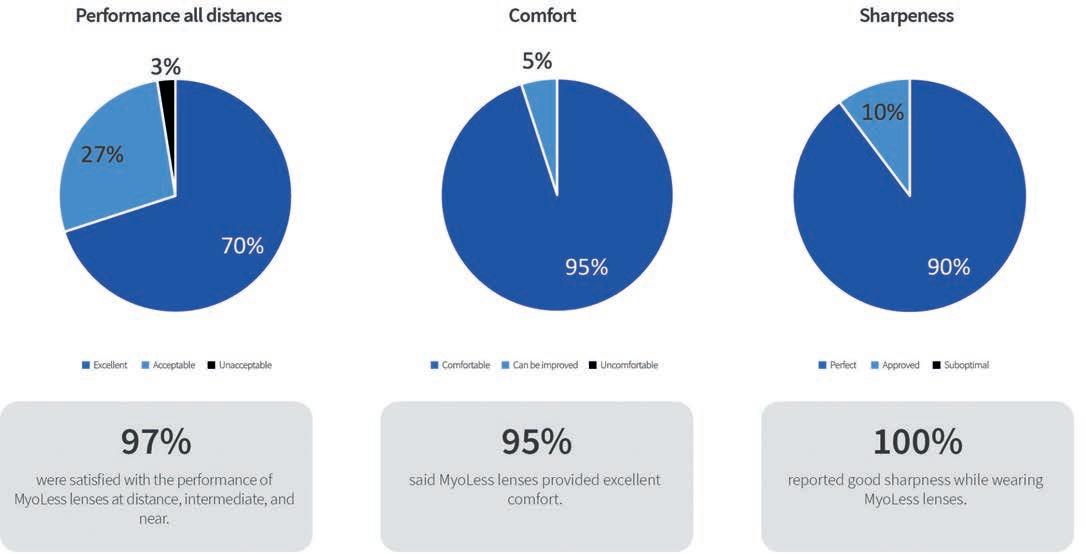
4: Percentage of satisfaction after 12 months of using the lens with MPDL technology. Patients rates their satisfaction in a scale from 1 to 10 for each item. Rates between 8 and 10 were considered excellent performance, acceptable were considered rates between 5 and 7 and unacceptable rates below 5.
Lab Management
Fig. 3: Axial length increase (mm) after 12 months of follow-up for a standard single vision lens in comparison to lenses with MPDL technology.
Fig.
n Excellent n Acceptable n Unacceptable n Comfortable n Can be improved n Uncomfortable n Perfect n Approved n Suboptimal MAFO 3-24 16 TECHNOLOGY

5: Average satisfaction rates after 12 months of follow-up for a standard single vision lens in comparison to lenses with
technology. Patients rate their satisfaction in a scale from 1 to 10 for each item.
trial carried out in a European population, showing that after one year of treatment, the proposed lens showed an efficacy of 39% for reducing axial length growth in myopic children. Additionally, thanks to the utilization of freeform technology, this solution ensures enhanced comfort, superior aesthetics, and a natural appearance, without the reliance on specialized semi-finished products. ◆

References
[1] Gifford, K., Haines, C. How much axial length growth is normal? Myopia profile. 2021
[2] Morgan, IG, Wu, PC, Ostrin, LA, Tideman, JWL, Yam, JC, Lan, W, Baraas, RC, He, X, Sankaridurg, P, Saw, SM, French, AN, Rose, KA, Guggenheim, JA. IMI Risk Factors for Myopia. IOVS. 2021;62(3):1-20.
[3] Wolffsohn JS, Whayeb Y, Logan NS, Weng R, Weng R. IMI—Global trends in myopia management attitudes and strategies in clinical practice—2022 update. IOVS. 2023;64(6):1-15.
[4] Lin, Zhi & Martinez, Aldo & Chen, Xiang & Li, Li & Sankaridurg, Padmaja & Holden, Brien & Ge, Jian. Peripheral Defocus with Single-Vision Spectacle Lenses in Myopic Children. OVS. 2009;87:4-9.
[5] Curcio C. A. Allen K. A. Topography of ganglion cells in human retina. J. Comp. Neurol., 1990;300:5–25.
[6] L ogan NS, Gilmartin B, Wildsoet CF, Dunne MC. Posterior retinal contour in adult human anisomyopia. IOVS 2004;45:2152-62.
[7] Faria-Ribeiro, M., Queiros, A., Lopes-Ferreira, D., Jorge, J., & Gonzalez-Meijome, J. M. Peripheral refraction and retinal contour in stable and progressive myopia. OVS. 2013;90(1):9-15.
[8] Wolffsohn, J. S., Kollbaum, P. S., Berntsen, D. A., Atchison, D. A., Benavente, A., Bradley, A., Buckhurst, H., Collins, M., Fujikado, T., Hiraoka, T., Hirota, M., Jones, D., Logan, N. S., Lundström, L., Torii, H., Read, S. A., & Naidoo, K. IMI – Clinical myopia control trials and instrumentation report. IOVS. 2019;60:M132–M160.
[9] Sánchez-Tena, M.A., Cleva, J.M., Villa-Collar, C., Álvarez, M., Ruiz-Pomeda, A., Martinez-Perez, C., Andreu-Vazquez, C., Chamorro, E., & Alvarez-Peregrina, C. Effectiveness of a Spectacle Lens with a Specific Asymmetric Myopic Peripheral Defocus: 12-Month Results in a Spanish Population. Children. 2024;11(2):177
[10] Concepción, P., Cano, C., Martinez-Pérez, C., Sánchez-Tena, M.A., Álvarez-Peregrina, C., Andreu-Vazquez, C., Cleva, JM., Villa-Collar, C. Subjective wearing experience of a novel spectacle lens for myopia management based on peripheral asymmetric myopic defocus. EAOO. 2024.
Jose Miguel Cleva is as VP of Technical Operations at IOT in charge of the technical support, quality control, production improvement, development of services and applications to improve the customer experience. He has a master’s degree in mathematics (major in Computer Science) at Complutense University of Madrid and is specialized in Computer Sciences (in the program “Languages and Computer Systems”) from the same University. Furthermore, he is a prolific and versatile researcher with an extensive and diversified curriculum.

Eva Chamorro is Clinical Research Director at IOT where she is involved in creating new lens designs and testing those trough theoretical analysis and wearer trials. She has a PhD in Visual Sciences, a degree in Optics and Optometry, a master’s degree in Optics, Optometry and Vision and Visual Rehabilitation and she is an expert in new methods and advanced techniques of visual examination. She shows a high activity in research projects, and in national and international congresses and she is an author of papers and patents in the field of Optometry.
Lab Management
Eva Chamorro
Jose Miguel Cleva
Fig.
MPDL
MAFO 3-24 17 TECHNOLOGY
n
SV n MDPL
Every diopter counts ‒but what to do when the aids are missing?
An interview about myopia treatment options in the US with Dr. Ashley Tucker
Every diopter counts and every child counts, state experts around the world when talking about myopia management in children. But what to do when there are simply no products approved for myopia treatment? This is the challenge facing ECPs throughout the USA. The third largest country in the world has so far only approved one single contact lens for myopia management. A scenario that has become unthinkable in Europe, where spectacle lenses for myopia management are sprouting up everywhere. MAFO wanted to find out more about the current situation in the USA and its impact. We spoke to a woman who describes herself as a myopia management enthusiast: Dr. Ashley Tucker. For years, she has been fully committed to ensuring that myopia management aids get finally approved in the US. And she has been appointed recently, as one out of four ambassadors for the education, outreach and practice-building initiatives of the World Council of Optometry (WCO), in partnership with CooperVision. By Hanna Diewald
Dr. Ashley Tucker
Dr. Ashley Tucker graduated from the University of Houston College of Optometry where she also completed a cornea and contact lens residency. Dr. Tucker is a partner at Bellaire Family Eye Care and The Contact Lens Institute of Houston and she is also a Visiting Assistant Professor at the University of Houston College of Optometry.
Dr. Tucker spends the majority of her clinic time managing patients who are in need of specialty contact lenses or myopia management and she has the honor of speaking on behalf of several contact lens companies on these topics. In addition, Dr. Tucker is a council member of the Contact Lens and Cornea section the AOA, a member of the advisory board for GPLI, and serves as the Public Outreach Chair for the Scleral Lens Education Society.


MAFO 3-24 18 SPOTLIGHT
Is myopia management in general a big deal in the USA?
Myopia management is making big headway in the US. The World Council of Optometry declared in 2021 that myopia management is now standard of care. That is a huge step forward. But we still have a lot of work to do to get patients, parents, even doctors still on board with the concept of managing myopia versus just treating it.
It is a whole shift in the mindset of practicing that we, the people promoting myopia management, are actively working on. We talk about it nonstop ‒ but it is still not enough.
A lot of patients and their parents come into our practice and have some awareness of what managing myopia looks like, but it still takes a lot of time to educate parents on the importance of managing this condition instead of just watching it progress.
Some kids are truly missing out and we will have missed the entire opportunity to control their myopia while waiting for the approval.
When you finally convinced them, what aids can you offer at all?
Currently, in the US, all we have is one single FDA approved product. It is a daily disposable contact lens that is very effective. It is a fantastic product, but we have lots of parents that hesitate to put their children in contact lenses at a young age or the kids are averse to putting contacts in their eyes. That is a whole subset of people that is automatically disqualified for a contact lens option.
Then we have to look off-label, because we do not have an FDA approved pharmaceutical either. We are currently using atropine off-label for those patients that do not want to use contact lenses.
But I personally do not use any spectacles off-label because there is plenty of research showing that bifocals and progressives are the least effective in myopia management.
For patients that have higher prescriptions or for patients that have a significant amount of astigmatism we can use also other contact lenses off-label. But for my philosophy, if I can get a child in the FDA approved option, that is what I am doing. But I am not limiting myself to only what the FDA approved option can do.
What is the problem with the “off-label-use”?
There is not one specific problem. When talking about something that is novel – like myopia management – parents are most interested in the product that is backed by the FDA. So, it is a much easier conversation to have. In addition, there is plenty of literature backing the efficacy and safety of this option.
When we are forced to use off-label products, we have less research backing our efforts and for some options like atropine, we can’t even explain to the parents the actual mechanism of action because it is currently not fully understood.
Can you please describe the current situation in the USA regarding spectacle lenses for myopia management?
We have nothing on the market so far and we are feverishly trying to get something approved. I am personally involved in one clinical trial that will eventually get us to market. It is the one by SightGlass Vision (editor´s note: A joint venture by CooperCompanies and EssilorLuxottica). But we have nothing available right now. It is a very slow-moving process and that is frustrating ‒ it has been several years now …
When you think about the pediatric age, the age from six to twelve are the formative years. Therefore, some kids are truly missing out and we will have missed the entire opportunity to control their myopia while waiting for the approval. So that timeline is super frustrating.

Advertisement
SPOTLIGHT
Data on pathological myopia in the USA remains lacking. However, it is estimated that around 4% suffer from high myopia, with big differences depending on the ethnic group. The term high myopia should not be equated with pathological myopia.
1%
of Europeans
1-3% of Asians
3% of the world's population is affected by pathologic myopia
What are the challenges in the approval process?
In my opinion the approval process is moving really slowly but I understand that we are studying a vulnerable group – children – and we have to be extra careful. But since these lenses are already approved in other countries, it would be great if the process could be expedited for us here in the U.S. The major harm that we are doing to our patients is waiting with no treatment. The worst case scenario for these glasses is that they simply don’t work or don’t work as good as we had hoped. Best case: they do work even if they work better than no treatment, we are winning! I will tell you the challenges that I have in my practice: The potential recruiting group, for these clinical trials, is very small. It is a small age group from let us say age 6 to 7. They need to be myopic and they need to have no history of using any sort of myopia control aids. They cannot have been in myopia control contact lenses; they could not have been in atropine. Therefore, it is difficult to recruit the patient population that we need to get this passed through the FDA.
Do you have any idea when the FDA approval will go through for spectacles?
That is the biggest question for all that are impatiently await this to arrive. But no one is telling us. Here are so many families, at least in my practice, that are desperately waiting for this. Some people have access to individuals in other countries that are getting glasses from other countries. Others are traveling to Canada to get those glasses. I am managing some patients who have them, but I can only manage them. I cannot reorder them or prescribe them or anything like that. There is a desperate need and desire for those spectacle lenses but we have no timeline.
According to the International Myopia Institute 3% of the world´s population is affected by pathologic myopia. Pathologic myopia affects 50-70% of the people with high myopia.
Is there anything the industry or ECPs can do to speed up the lengthy process?
I think everyone is doing all that they can. But, if doctors could collectively help recruit subjects for these trials, that would definitely expedite things. The hardest part is recruiting willing and eligible subjects.
Do you personally think that spectacle lenses are as effective as contact lenses or is it more about comfort?
The literature and research show, that all three options ‒ the HAL, DIMS and DOT technology ‒ seem to be similar in their efficacy and pretty similar to what the FDA approved contact lens options have shown us. So yes, I am really excited that this is going to be an option for our patients.
What would be your biggest wish for the near future?
My biggest wish would be the spectacle option just because it will open up myopia management to pretty much every patient.
But I cannot wait either for an FDA approved formulation of atropine, both for monotherapy and then potentially for a combination therapy for those kids that need more than one therapy. Atropine, coupled with glasses, or atropine coupled with contact lenses.
Thirdly, I would just wish that there would be more awareness of the importance of myopia management and not to have to spend so much chair time convincing parents that this is important.
And finally, from a public health standpoint, I wish there were just more awareness that myopia is a disease and it is not just a prescription issue. We are the ones that shape the future, and we have the ability to change the mindset. ◆
MAFO 3-24 20 SPOTLIGHT



A state-of-theart technology for photochromic lenses
The history of ColorMatic
Photochromic lenses by Rodenstock have a very long history. For more than 55 years now, the product has been continuously improved. The primary development goals were always the same: rapid reaction kinetics in lightening and darkening, an almost transparent lens indoors and a comfortably darkened lens in the sunshine. Thanks to an innovative compound technology, the lenses are now almost perfect and exactly at this high level the company has taken a surprising step. From now on, independent lab partners will have access to the ColorMatic technology as well as to ColorMatic as an independent technology brand.
By Franz-Josef Achatz

Photochromic lenses since 1960
Self-tinting lenses have the spectacular property of changing their light absorption evenly and reversibly depending on the sunlight intensity. Starting from a highly transparent basic state, they darken when exposed to sunlight and lighten up again with decreasing sunlight, returning to their original state.
The first photochromic lenses were developed in the 1960s using mineral glass by two American chemists, Stanley Donald Stookey and William Armistead. Recognizing the comfort this technology offered to spectacle wearers, Rodenstock, a pioneer in the field, introduced them to the European market in 1968 as the first European lens manufacturer.
Lab Management MAFO 3-24 22 TECHNOLOGY
While the desire for even greater comfort using lighter plastic lenses was already apparent, the production process used for mineral glass could not be directly transferred to plastic lenses.
The first generation of phototropic plastic lenses from Rodenstock was introduced as “ColorMatic” on the market in 1986. Ever since, generations of dedicated scientists at Rodenstock have been working on further improving this first generation. Properties like darkening depth, fading speed and stability have been successively improved.
The goal was and still remains to offer the best possible performance and quality to spectacle wearers. Therefore, Rodenstock continued to question their products, to push boundaries, change paradigms and maintain their good market position.
The functionality of photochromic lenses
As is widely known, photochromic molecules in the lens react to UV radiation. Indoors, they maintain a closed structure, allowing visible light to pass through the lens unhindered. When exposed to sunlight, the photochromic molecules react and change their structure. They unfold, the changed structure absorbs more visible light, thereby reducing transmission. The lenses darken.
If the intensity of UV radiation decreases, for example due to cloud cover, the molecules partially close again. The lens becomes semitransparent. If UV radiation no longer impacts the lens, the photochromic molecules return to their initial state, allowing visible light to pass through. The lens becomes clear again.
The photochromic technology of ColorMatic
As one innovation leader for photochromic lenses, Rodenstock is constantly setting new standards in quality, speed and stability with its own research and development department. With a clear focus on innovation, the pioneering work in this area is reflected in a track record of over 80 patents.
ColorMatic is a high-performance technology for photochromic lenses offering protection against harmful UV light and reducing blue light and glare. For light-sensitive spectacle wearers in particular, it offers relaxed vision thanks to tinting in appropriate light conditions. Since the first product generations, rapid reaction kinetics in lightening and darkening has been a primary development goal for all Rodenstock photochromic products. Thus ColorMatic offers outstanding vision clarity and performance across all refractive indices and materials, as well as high lightening speed in all climates and throughout all seasons, 365 days a year.
This greatly improved reaction kinetics, coupled with consistently stable photochromic performance and UV protection, is achieved by technology.
A conventional approach to improving kinetics would involve designing the polymer matrix (the plastic material surrounding the dyes) to be more flexible. However, a very soft matrix is not compatible with high mechanical stability requirements.
The latest generation for best performance
With ColorMatic X, Rodenstock is taking a different approach: Rodenstock has taken their latest dye generation and embedded it in a durable optical high-index matrix. However, the dye’s surroundings have a different flexibility. Additional degrees of freedom regarding optical properties and UV protection are generated by the compound technology, which separates the function of phototropism from the optical and mechanical properties of the lens.
Full UV protection is ensured by the superior base lens. The lens can thus change from the darkened state to the colorless state at an accelerated rate – 54% faster than the previous generation. In doing so, the lenses achieve a base transmittance of up to 95%, meaning they are hardly distinguishable from conventional lenses indoors, making them currently the clearest photochromic lenses on the market.[1]
The lightening time is a crucial factor for phototropic lenses because faster lightening means a seamless viewing experience for the wearer. Another advantage is that the lenses darken by up to 88% outdoors, providing the wearer with comfortable vision and protection in changing light conditions and bright sunlight.
ColorMatic as an independent technology brand
To emphasize this outstanding technology, Rodenstock is taking a decisive further step and positioning ColorMatic as an independent technology brand with its own brand design, thus giving independent lab partners access to the ColorMatic technology and brand.
The positioning as an independent brand demonstrates the company's ongoing commitment to innovation and product development and represents Rodenstock's high-quality photochromic technology with its own brand design. The recently introduced hexagon logo stands for a photochromic molecule that represents the technology through a color gradient. The associated tagline “Engineering photochromic performance” refers to the outstanding in-house expertise and the endeavor to redefine the limits in terms of performance and speed. ◆
References [1] Based on internal data on index 1.60
 Franz-Josef Achatz
Franz-Josef Achatz
Franz-Josef Achatz is a Senior Manager in the Global Product Management Lenses at Rodenstock. With his passion for strategy and innovation management in the field of ophthalmic lenses, he focuses on the development and marketing of photochromic products, among other things.
Lab Management
MAFO 3-24 23 TECHNOLOGY

Why Choose MAFO
Expertise: Our team comprises ophthalmic optics specialists
Global Insights: We connect professionals worldwide
Comprehensive Coverage: From articles to market analysis
Timely Updates: Stay informed in a fast-paced industry
VISIT US ONLINE NOW: WWW.MAFO-OPTICS.COM VISIT THE NEW WEBSITE YOUR TRUSTED SOURCE IN OPHTHALMIC OPTICS
OPHTHALMIC LABS & IN DUSTRY
ColorMatic® – Controlling light through technology
An interview with Soren Ostergaard from Rodenstock
Soren Ostergaard, Vice President International Sales at Rodenstock talks about the move to establish ColorMatic® as an independent technology brand and the resulting benefits for lab partners.
What does the technology brand ColorMatic® stand for?
ColorMatic® represents a self-developed, high-performance technology for photochromic lenses, providing protection against harmful UV light, artificial blue light, and glare. For over 55 years, it has been a testament to Rodenstock's expertise and innovation. However, Rodenstock does not settle for standard; it always pushes the boundaries further. Our in-house experts in research and development, with 100% German engineering, have consistently set the benchmark, tirelessly working to push the technological limits of photochromic technology.

What were the reasons for positioning ColorMatic® as an independent technology brand?
Positioning ColorMatic® as its own technology brand demonstrates a continuous commitment to innovation and product development, emphasizing the importance of the outstanding photochromic technology through its own brand design. The newly developed Hexagon logo symbolizes a photochromic molecule, representing the technology through a gradient of colors. The accompanying tagline, "Engineering photochromic performance," highlights the exceptional in-house expertise and the aspiration to redefine boundaries in terms of performance and speed.
What are the advantages for lab partners of the new positioning as a brand?
By expanding as an independent technology brand, lab partners now have the opportunity to leverage the ColorMatic® technology brand and branding flexibly as part of their own premium tailored solution. Integrating ColorMatic® into their own portfolio enables our lab partners to position themselves at a high level of quality. Through the high degree of independence of this brand, Rodenstock supports lab partners in the individual implementation of ColorMatic® according to their needs. As a strong partner and independent provider, Rodenstock offers them the highest quality, extensive experience in production, as well as support in marketing and sales.
What does the ColorMatic® portfolio look like?
The ColorMatic® portfolio is uniquely diverse. In addition to ColorMatic® X, we also offer ColorMatic® 3, which boasts impressive performance and intense darkening, along with a wide selection of indices and color variations. Completing the portfolio is ColorMatic® Sun 3, an intelligent sunglass lens with contrast enhancer. As we are constantly working on further developments, we aim to grow together with our lab partners and continue to strive towards supporting the needs of spectacle wearers with the highest level of innovation and the best products in the future.
More information under: www.colormatic-lenses.com MAFO 3-24 25 PR-ADVERT

What you see is what you hear
EssilorLuxottica launches first hearing aid glasses
According to the World Health Organization (WHO), one in four people worldwide is expected to have hearing problems by 2050. At the same time, the undersupply in the hearing aid market is serious. One reason for this is that hearing systems are often associated with a lot of stigmatization. For example: “Anyone who wears hearing aids is old”. Even though this prejudice is far from reality. Therefore, the industry giant EssilorLuxottica now wants to address this issue in a special way: The company's first hearing aid glasses will be launched on the market in fall 2024, The group is thus entering completely new territory in the hearing acoustics industry. In this article you will find out more about the opportunities and special features of the new technology and differences compared to traditional hearing aids. By Hanna Diewald
Nuance Audio is the name of the new smart glasses with audio components like microphones and speakers that are to be launched on the US market in the second half of 2024. After that, they also will come to Europe. Already in summer 2023, EssilorLuxottica announced that it had acquired 100% of the Israeli start-up Nuance and was now working on hearing aid glasses with an audio team and in-house research and development.
Hearing aid glasses themselves are not necessarily anything new. The first hearing aid glasses already existed in the 1950s. What is new, however, is that the world's largest ophthalmic optics group by far is now entering this market. What was previously a niche product could therefore gain a whole new reputation. This step is particularly exciting as there is a large global gap in the provision of hearing aids, which varies significantly from country to
MAFO 3-24 26 SPOTLIGHT
country. Unfortunately, precise data on this is often lacking but EssilorLuxottica itself assumes that there is a global coverage gap of 83%.
An invisible hearing solution
In February, at the Mido trade fair, MAFO editors had the chance to test the new hearing glasses live, even before the official launch. “We are talking about glasses with an invisible integrated hearing solution,” explained Stefano Genco, Global Head of Super Audio and Nuance Audio, at the EssilorLuxottica booth. And indeed, the frame does look very similar to a standard acetate frame. The technology, such as various microphones and two loudspeakers near the ears, is invisibly built into the temples. Individual power lenses can be fitted as usual by any standard lens manufacturer.
Nuance Audio comes with a wireless charging pad for easy recharging. It takes around 2.5 hours to charge fully and the estimated battery life is around eight hours of typical usage in a noisy environment.
The hearing aid glasses are available on the market in two colors, with two different temple lengths and in three sizes (48, 54 and 56). “The biggest one is specially addressed to the US market, where we will launch Nuance Audio first,” explained Genco.
The technology and how it works
For the user, the hearing aid glasses work very simply. Various microphones in the glasses record the sound.
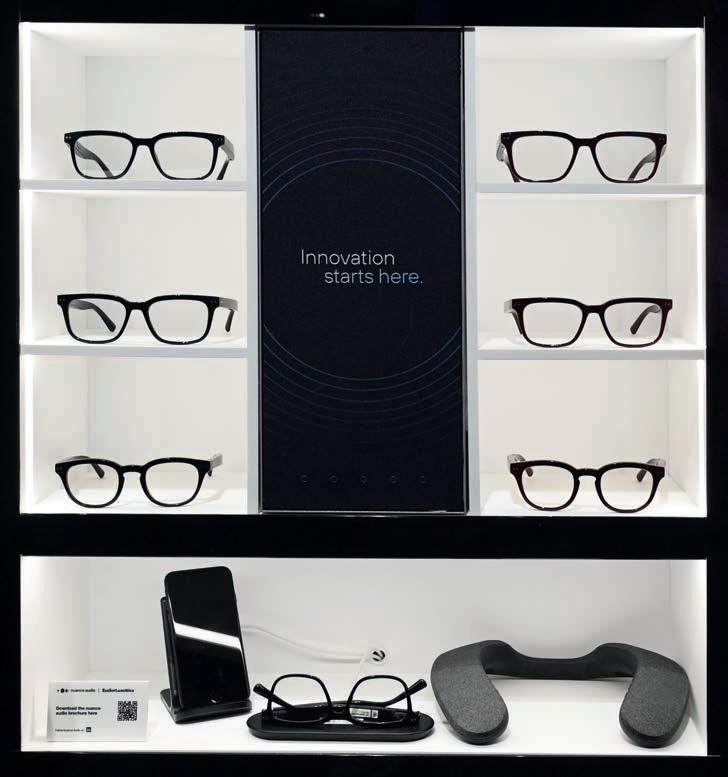
The speech of the person opposite is then amplified and emitted via speakers on the temples, near the ears. The glasses are put on and are ready for use in less than a minute. The surrounding sounds are analyzed within 30 seconds and the user's voice for a further 30 seconds; during which time the user must speak.
Several algorithms auto-configure the entire system so that the individual amplification is adapted to the ambient noise. The longer the g lasses are worn, the more the user adapts to this way of hearing.
“So what we are saying is: What you see is what you hear. This is the perfect combination between vision and hearing,“ said Genco. This means that in particular those sounds that hit the microphones of the glasses from the front are amplified.
As people are usually looking directly at the person they are speaking to, the other person's speech is amplified and the “distracting” background noise is reduced.
“The more you are surrounded by noise, the more these glasses will help you to focus on what your target is saying. And this is precisely what someone with mild hearing loss wants to have during their conversation with friends or during their cocktail party,”
explained Genco. The amplification in decibels can then be changed individually by the user via the mobile app. This means that conversation partners or even the user's own voice can be made louder or quieter.
The hearing glasses put to the test
But now it is time for testing. The optical trade fair is the perfect test environment because it is loud and crowded everywhere. Even for people with mild hearing loss, it can be difficult to understand speech properly in such an environment.
The glasses feel similar to other plastic glasses and they are quickly ready to go. Since I personally still hear very well, I notice the amplification but no substantial hearing advantage at the trade fair.
It is a completely different story for my colleague: She belongs to the exact target group that the company wants to address. She is 51 years old and has often suspected that she has a slight hearing loss, but has never visited an ear specialist or audiologist.
And indeed ‒ the ah-ha effect is there. My colleague understands our interview partner Stefano Genco much better than before and is delighted.
MAFO 3-24 27 SPOTLIGHT
The new hearing glasses will be available in different colors. The photo shows the standard model in black. Photo: EssilorLuxottica

“On average worldwide, the customers of traditional hearing solution are around 75 years old. However, people start having hearing loss often when they are 50 or 55, but they refuse any kind of solution, because of different reasons, such as the stigma, the discomfort and the price,“ explained Genco.
The hearing aid glasses avoid the problem of traditional hearing aids. There is no stigmatization because the glasses look fashionable and especially because they can be tried out without prior hearing tests, visits to the doctor, etc.
However, there are major technical differences compared to hearing aids. To understand them, someone needs to understand how other devices work.
The hearing curve
Just as people's visual acuity is highly individual, the hearing curve of people with hearing loss is also highly individual. For this reason, a sound audiogram is always recorded when a traditional hearing aid is fitted. Each hearing system fitted by the hearing care professional is adjusted precisely to this individual hearing curve of the respective customer.
An individual fitting as such is not yet possible for EssilorLuxottica’s smart glasses, the company is taking a different approach by classifying hearing curves.
According to the company, the hearing aid glasses are suitable for mild to moderate hearing losses ‒ i.e. not for profound hearing losses. These mild to moderate hearing losses can be roughly classified in a certain way. The company defined three “scenarios”.
According to the company's studies, these three scenarios or hearing curves cover more than 90% of mild to moderate hearing losses relatively well. This means that there is only a small proportion of people with hearing loss for whom the hearing curve does not match their hearing loss at all.
Glasses versus hearing aids
For “non-hearing aid acousticians”, it may be easy to think that the new hearing aid glasses can replace a hearing aid. However, this is not the case. At present, the smart glasses are not technically comparable with individually fitted hearing aids.
Because these are adapted to the individual hearing curve of hearing impaired people, the loudspeakers are placed in the ear canal for better intelligibility and, at least with high-end hearing systems, there are countless more technical features that optimize hearing. And just as good vision with glasses is generally only possible on the basis of the right refraction, perfect hearing also requires a hearing test by an expert and a corresponding individual fitting.
An interesting barrier-free entry
But hearing aid glasses can be a very interesting introduction to the world of hearing aids for other reasons: They address two needs with one single device. The glasses can offer a first barrier-free entry for people with mild to moderate hearing loss. They amplify the other person's voice, provided they are being looked at, and reduce distracting background noise.
The inhibition threshold to try out a real hearing aid is removed. The technology is therefore a good first step towards counteracting the
Stefano Genco, Global Head of Super Audio and Nuance Audio at EssilorLuxottica, demonstrated the prototype of the hearing glasses at Mido.
MAFO 3-24 28 SPOTLIGHT
Photo: EssilorLuxottica
Upgrade your lab with the latest spin coating technology
Velocity Spin Coating Systems
Our spin coating systems are available for any production volume and are also offered in automated options. Optimize your coating process today and take your production to the next level.
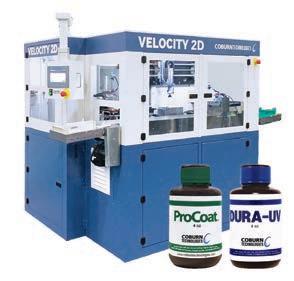



Renew your equipment with our leading optical coating technology! Exclusive offer: Receive coating credits for your MR3 and Mini 2 when you purchase a Velocity system. Consult the conditions of this promotion with one of our representatives.








1-800-262-8761 | coburntechnologies.com
Advertisement
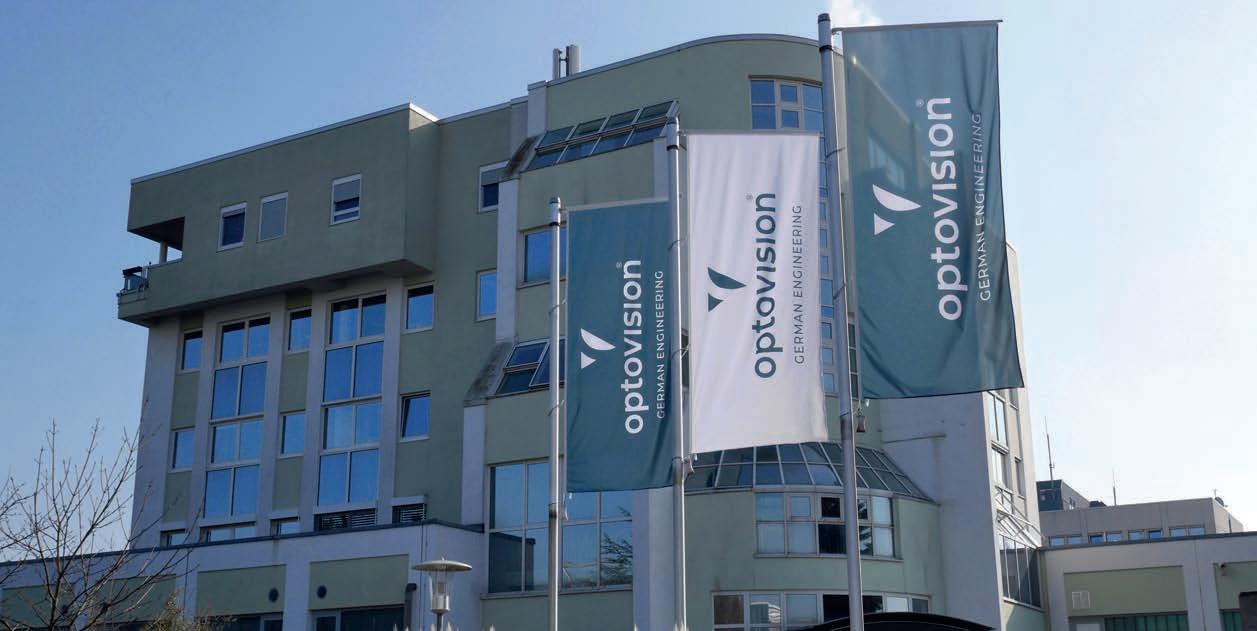
Striving for innovation
A visit to Optovision in Langen
Thousands of spectacle lenses roll off the Optovision production line every day. The ophthalmic lens manufacturer has won numerous awards for outstanding performance in the areas of quality, service and more, over a period going back 45 years. Despite this or rather because of these qualities its image needs to be constantly reinvented. Their new brand image is designed to make a more high-quality, technical and innovative impression on customers. Keen to demonstrate how this can be achieved on site, the manufacturer invited MAFO to visit them at Langen in Hesse (Germany), where we were able to take a look at the production facilities (Part 1) as well as learn more about the new corporate image, new products and the opticians' desire for more innovation (Part 2). By Hanna Diewald and Daniel Groß
The sun shone brightly as we drove to Optovision in Langen (Germany). The spectacle lens manufacturer is located in the middle of the industrial area and the new brand image is already clearly visible outside the door: with the green on the flags being slightly darker and a figurative mark in the logo for the first time. But before learning more about the new image, we were first picked up at reception for a tour of the production.
Part 1 – The production
Tanja Böttner, the plant manager, guides us through the somewhat convoluted building (Fig. 1). The production is located in between the
two higher parts of the building, where reception and administration are located, among others.
As we enter, things become louder straightaway and the plant manager has to raise her voice to be heard clearly. Our first stop is in front of the warehouse for spectacle lens blanks, where thousands of blanks are waiting in a wide variety of indices, diameters and thicknesses.
Off to the conveyor belt
The lens boxes now head off on their journey. All the orders are placed on the conveyor belt where things start to get interesting, because there is not just one single route through the machine hall. Firstly, there are
MAFO 3-24 30 LIVE ON SITE
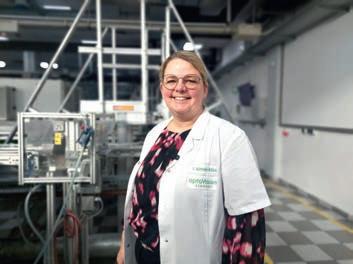
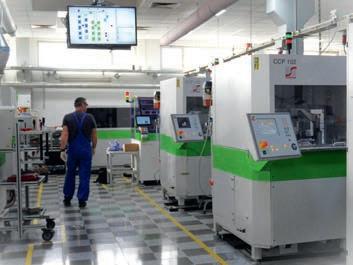


several machines at each process step, so the software has to distribute all the orders appropriately to avoid waiting times, and secondly, there are always special orders that still have to be scheduled by hand.
As we look on, everything is running smoothly: the standard sizes are running into the fully automatic blocking machine, while more special contours or thicknesses are directed to the employees who attach the blocks by hand for the manual machines.
Here you can see how the liquid metal alloy flows between the lens and the blocking fixture. At 50 °C, the alloy is still liquid but as soon as it cools slightly it solidifies and the lens and the block is firmly bonded. Cooling continues on the conveyor belt, as the order now moves up to the ceiling and on through a gap in the wall to the next room.
Surfacing, marking, cleaning and more
Surface treatment takes place in this hall, where the individual requirements are incorporated into the lens. Optovision’s focus here is on all kinds of organic materials; mineral lenses, on the other hand, are no longer processed here.
“Here we have a row of nine milling machines, where the production control system automatically determines which job goes to which machine,” Tanja Böttner explains. The milling machines are used to generate the shape of the lens, at the end of which the surface is completely finished in terms of its refractive power. After machining, the blank is significantly thinner.
The next step is polishing (Fig. 4). In total there are nine polishing machines. A variety of polishing heads are used to finish the surface to make it completely clear ‒ at least in theory. In practice, however, the

for tinting.
Optovision
lens is now so covered in polishing paste that it has to be cleaned with the aid of a robotic arm (Fig. 2). This is equipped with a sponge and is affectionately known as SpongeBob by the employees.
In the next step, the progressive lens markings are applied using a laser and the blocking pieces are now detached again by melting the alloy using hot water. “The liquid metal flows into the container and is then returned to the start of the cycle. It can then be reused to block the next lenses,” Tanja Böttner explains. The tape, subsequently has to be removed. In order for the lenses to progress in a clean state to the next operation, they first pass through a washing and drying system.
At this point, a decision is taken about how the order is to proceed: Lenses to be tinted are sent to the tinting plant, while all other lenses go straight to the coating process.
Tinting department
There is a very particular atmosphere in the dyeing department where everything is steaming and simmering, with the radio on in the background. Compared to the machine noise in production, it is pleasantly quiet here, where a number of employees are fully concentrated on dyeing the lenses (Fig. 5). “This is a process where employees need a lot of experience. When they receive a sample lens with a gradient from purple to pink, they have to know exactly how to tint it,” Böttner explains, before we head off to the next department.
In the coating area
“We are now in the coating area,” the production manager warns us: “We have to be a bit careful here, because cleanliness is extremely
1 2 4 5 3
MAFO 3-24 31 LIVE ON SITE
Fig. 1:Plant manager Tanja Böttner expertly guides you through the production. Photo: Hanna Diewald. Fig. 2: The remaining polishing paste is removed using the “SpongeBob“. Photo: Optovision. Fig. 3: Lens boxes are transported from one process to the next on the conveyor belt. Photo: Optovision. Fig. 4: In the machine shop. Photo: Hanna Diewald. Fig. 5: The lenses are immersed in a color bath
Photo:
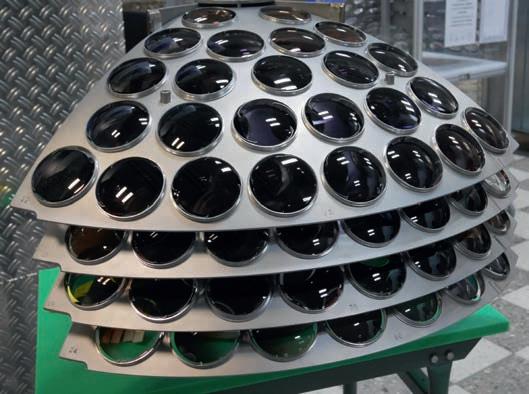
important. Every particle that comes into contact with the lens will stay on it forever once it is coated.”
That is why all lenses first go through the white check here. An employee looks closely to see whether the lens has been manufactured exactly as specified and there are no flaws, etc. Only after careful inspection are the lenses sorted by hand according to indices such as 1.6 or 1.67, as the coating must match the refractive index. The lenses are then transferred to clean boxes before it is time for the hard coating. For the dip-coating process, all lenses are fixed in frames using clamps. This allows them to pass securely through all the dipping tanks in the hard coating machine. Before the final coating, the lenses are submerged in various cleaning and pre-treatment liquids. Only then are the lenses dipped slowly and carefully into the special synthetic resin varnish and pulled out again at a precisely controlled speed, so that the thickness of the coating is exactly right.
Even after this operation, all lenses still have to be checked before going into the oven for hardening where they remain for four hours until the hard coating has completely cured.
45 years Optovision
Optovision was founded by Günter Agotz and Jürgen Braun in 1979. The ophthalmic lens manufacturer is thus celebrating its 45th birthday this year and now has over 400 employees worldwide. Many of the company's employees at the Langen site have been part of the team for several decades and have witnessed various milestones, including the takeover by the current parent company Rodenstock in 1998, which has enabled valuable synergies to be exploited within the Group, for example in the area of research and development.
For the next operation, anti-reflection coating, all lenses are placed in so-called calottes, in readiness for the high-vacuum coating process (Fig. 6). Here the anti-reflection coating – and any other special coatings – are created by vaporizing a wide variety of materials, such as quartz, titanium oxide, etc. which are then deposited on the lens. The lens is now finished. It is checked one last time before being sent to the customer via Transmed; at least if it does not need to be edged.
Because a not inconsiderable proportion of the lenses – up to 70% Böttner estimates – undergo a further process: distant edging. Where requested by the optician, the lenses are fitted into the appropriate frame before they are finally allowed to leave the large halls. A quick final check, then on to the automatic bagging machine and the start of their journey to the optician. For us, the first part of our tour ends here, as we make our way to the tall office buildings.
Part 2 – Colors, innovation and new products
In production, we were able to see what has constituted the core of the spectacle lens manufacturer for decades, but product quality is of course not everything. The external image must also be perfect if the company is to remain fit for the future. We find out more about the management’s vision for the future in the administrative building, where we meet Senior Product Manager Franziska Prang, Head of Marketing & Communications Alexander de Vries, and the CEO of Optovision Christian Bannert (Fig. 7).
“We wanted to develop further because we are a traditional company founded in 1979. We have been through a lot and have undergone many changes. Now we want to understand our customers' needs even better and respond to them,” explains Bannert. “Our target audience are independent opticians, for whom a personal approach is important, and who also like to come and see us from time to time.”
The desire for more innovation
But what exactly do medium-sized opticians want? Optovision found out through a comprehensive customer survey about purchase drivers and brand perception. Optovision scored very well in terms of product quality, for example. Customers also appreciate their German roots and customer proximity, so the basics seemed right. Furthermore, the price-performance ratio which is particularly important was appreciated by Optovision customers. However, there was room for improvement in terms of innovation, which is precisely what the manufacturer has taken to heart. “Of course, this doesn't mean that we weren't innovative before, but now we want to communicate this much better to the outside world,” de Vries added.
A new world of color
Those responsible have been working hard to achieve this, not least by the introduction of the new color scheme. While the familiar green has been retained, the tone has become much darker: “It's similar to whiskey,” explains
Fig. 6: For the anti-reflection process, all lenses have to be fixed in socalled calottes. Photo: Hanna Diewald
6 MAFO 3-24 32 LIVE ON SITE
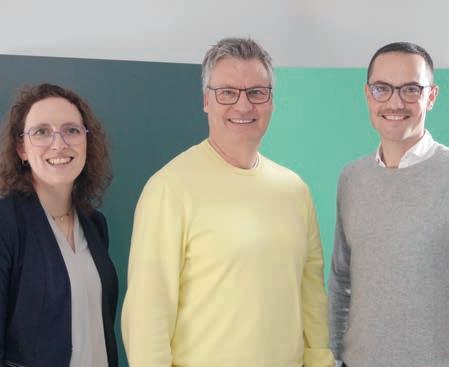
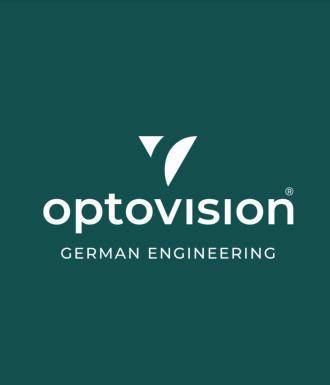
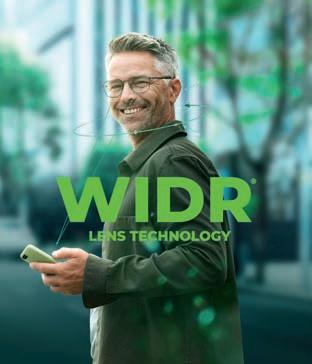
the Head of Marketing with a grin: “The darker the color, the higher the quality.” In general, dark colors tend to be associated with high quality. The entire color scheme was therefore changed to the darker shade of green – from the flags in front of the door to the pens handed out.
Individual marketing materials and German engineering
The manufacturer has also revolutionized the marketing materials for opticians. Instead of sending out standard marketing material to all customers, Optovision now does everything individually. This means that opticians can use an online portal to select the desired advertising material from a database of hundreds of photos – from production, to models on the beach wearing sunglasses. Some posters, etc. even permit the choice of different design options.
The manufacturer has also created a promotional video which can be individualized for each optician. The personal sales pitch of an optician is first shown in the film, before panning into the lens production.
The term “German Engineering” now appears under the logo (Fig. 8)., but what does this signify? The term is intended to emphasize both the product quality and the German expertise behind it: “We want it to emphasize the connection to our German roots even more strongly and communicate even more dynamically,” de Vries explains.
After all, over a million spectacle lenses are made at the Langen site every year. That is all the company's individually manufactured organic lenses; only the standard stock single-vision lenses are bought-in. Another point, designed to focus more on quality, is that the world of vision is becoming more technical – thus the aim is to emphasize the company’s engineering know-how.
WIDR Lens Technology
Another major topic in connection with innovation are new products. The company is currently heavily promoting WIDR Lens Technology.
Here, too, a very comprehensive analysis has been carried out: Eye movements of over 5,000 spectacle wearers were analyzed using VR technology, which has resulted in a new progressive-lens design that is intended to be better adapted to the dynamic world with dynamic eye movements. To this end, the intermediate and near ranges were kept as large as possible, in order to shift the aberrations to the areas that are less used according to the visual analysis. “We have received very positive feedback on these lenses. Customers are very happy and say they feel like a singlevision lens,” de Vries reports.
Myopia management
And of course, another important topic – if not the most important one – must be mentioned: Myopia management. In this segment, the company offers the My-Kid ophthalmic lenses. These are based on proven lens technology, which is based on a 5-year independent study which confirmed that myopia progression can be slowed by as much as 40%.
Senior Product Manager Franziska Prang would recommend the lenses to every myopic child: “The lenses can really be used preventively. Especially if there is a genetic predisposition, it is extremely important to tackle this problem in children.” According to Prang, the lenses can also be recommended for children under the age of six, even though the study was carried out with children aged between six to fourteen.
At the end of our visit, it became clear: Optovision has tweaked a wide variety of things to make them even better. The focus is now clearly on what opticians want, and the lens manufacturer is always happy to invite opticians to the production facility in Langen, to ensure the greatest possible customer involvement.
Customers will find it hard to ignore the amount of effort the company is putting into innovation in the future, not least because the aim is to continuously expand this area, as Managing Director Christian Banner concludes: “We will be driving innovation forward even more than we have done in the past. My-Kid, WIDR and ColorMatic X are just a few examples, and we will continue to work on the topic of innovation.”◆
Fig. 8 (l): The new company logo consists of an “O” and a “V”, and a spectacle lens can also be imagined. Fig. 9 (r): The new visual language is dynamic, technical and in dark green. Photo: Optovision
7 8 9 MAFO 3-24 33 LIVE ON SITE
Fig. 7: F.l.t.r.: Franziska Prang (Senior Product Manager), Christian Bannert (CEO of Optovision) and Alexander de Vries (Head of Marketing & Communications). Photo: Hanna Diewald

Generation Z
What awaits the labor market?
Current studies show that with the so-called Generation Z, young people are currently entering the labor market who have completely different values and expectations than their predecessors. As a result, they pose completely new challenges for the HR sector but also new opportunities and possibilities.
Lab Management MAFO 3-24 34 BUSINESS

The term Generation X was coined by Robert Capa in the early 1950s. The US photographer used it in a photo reportage. The term caught on and is used as a buzzword today. And because it fitted so well, Generation X was followed by Generation Y and now − logically − Gen Z. These previous generations also include the so-called baby boomers. The generational terms are not always used in exactly the same way. However, the working world experts generally classifies them as follows:
▶ Baby Boomers: born between 1943 and 1964
▶ Generation X: born between 1965 and 1978
▶ Generation Y (also called millennials): born between 1979 and 1998
▶ Generation Z: born from 1999 onwards (also from 1995 onwards, depending on the author)
Employers have found that Generations X and Y differ greatly in their behavior and values. Accordingly, the acquisition of applicants, employee motivation and the long-term retention of employees have been subject to change over the last twenty years. While Generation X was considered ambitious and materialistic, but also skeptical and reserved, Generation Y has changed a lot. With an affinity for technology, self-centered and often less connected to their employer, but also more positive, teamoriented and idealistic, Generation Y turned the job market upside down.
Now Generation Z is gearing up for working life. And in turn is creating change − and new opportunities. Several researcher believe that the connection between professional and private life is becoming increasingly important for this generation.
Lab Management MAFO 3-24 35 BUSINESS
Digital natives 2.0
Generation Z brings completely different prerequisites to the world of work. From an early age, these young people are used to processing a flood of digital information and using it to their advantage. While some members of Gen Y have already been described as “digital natives”, this applies to an even greater extent to Generation Z. They are growing up in the middle of a digital world. They are part of a 24-hour networked online community – and they like to be. Virtual contacts are often maintained on an equal footing with personal contacts. There is no longer a clear distinction between the real and virtual worlds. The two worlds are merging into one, with social networks, WhatsApp, blogs and forums being seamlessly integrated into daily life and accessible at all times via smartphone. Cell phones and notebooks, Facebook and Skype are part of life. Content is shared online and information is obtained from the internet. Digital technology is perceived as a natural extension of oneself and one's own possibilities.
Of course, not every young person born from the end of the 1990s onwards is the same. But one thing is certainly true: Generation Z has grown up with the possibilities of a digitally networked world. Online discussion, exchange and interaction are part of everyday life. There is more comparison, more questioning than in previous generations.
Gen Z's expectations of everyday working life
Generation Z is characterized by different expectations, a different world view and different value patterns. They grew up in a context like no generation before. Children were at the center of attention, were included in decisions, motivated and praised. Self-confidence was promoted. These expectations are also reflected in youth marketing. Generation Z wants to be independent.
Generation Z know their opportunities, they know their value and they confidently demand the right conditions and an exciting field of work.
They approach their working life with curiosity and openness, making use of all the technical possibilities, and strive for an optimal mix of working life and leisure time. At the same time, however, employers are losing importance, which – thanks to Darwiportunism – is partly their own fault. This is not to say that the new generation is less motivated. They just need to be motivated differently.
Surveys show this: It is not the level of salary and the status associated with the job that are important to Generation Z. Instead, the focus is
on self-realization, enjoying the job, a good working atmosphere and a suitable working environment. Recrutainment also follows this approach. Applicants are asked in advance about their interests, skills and, in some cases, vision and loyalty.
Challenge: new HR strategies required
When filling new vacancies, the proportion of applicants is increasingly shifting towards Generation Z. It is therefore particularly important to adapt strategies for the allocation of apprenticeships, employer branding, school marketing and university marketing. Generation Y was already said to lack an emotional connection to the company. This trend is continuing.
This makes it all the more important to create motivation in other ways: For example, through interesting projects, changing challenges, good development opportunities and results-oriented leadership. For Generation Y, it was only recognized late that a rethink in management was necessary. Many things have only gradually become established: Flexible working hours, consideration for work-life balance and performance-oriented remuneration strengthen employee motivation and loyalty. For Generation Z, companies must continue to rethink and adapt to the “digital natives”. Although still a long way off, this will also apply to managers and career promises in the coming years.
Measures for addressing Generation Z
More and more HR employees and recruiters are looking at ways to address Gen Z. Clever HR colleagues are trying out many exciting approaches. Whether it is applying via WhatsApp, influencer marketing, selecting a suitable manager via time-delayed video interviews, digital events at secondary school or recruitment campaigns via Snapchat. The possibilities are seemingly endless these days. However, it is important to understand that not all measures really make sense. For example, there are many great-looking projects that have been designed without taking the target group's world into account. HR staff often try to mix new technologies with familiar selection processes. However, it is more effective to establish new processes and then find suitable measures. This avoids expensive experiments that look good on social networks but are not reflected in qualitative applicant numbers. According to this principle, candidates who are actually interested in the company and the job are invited to interviews.
Values of Generation Z
Future generations will no longer grow up in the prosperity that prevailed 20 - 30 years ago. Gen Z has virtually symbolized this motto and must now provide its own answers or create its own values. Young people are usually impulsive, adventurous and have an urgent need for development.
Generation Z is no different here. Even though the generations are changing, some of the values of the previous generations have remained unchanged. However, the trend clearly shows that certain values are becoming increasingly prevalent. These include:
Lab Management
MAFO 3-24 36 BUSINESS
▶ Desire for free development and yet open-ended contracts
▶ Major concerns about their own future
▶ Less and less identification with well-known managers such as Martin Winterkorn, Tim Cook or Bill Gates.
▶ Desire for flexibility and changeability in the world of work
▶ Buzzwords such as work-life balance or family friendliness are being heard less and less, as many employers usually only promise them but do not keep them
▶ Management responsibility is becoming increasingly unattractive. Leisure time plays a much greater role
▶ The employer brand is becoming more and more important, as learned behavior (ratings on the internet, tests, comparisons, rankings) is becoming increasingly important
▶ Digitalization is an essential part of everyday working life. Social media ban in training? A no-go!
▶ Labor market researchers are increasingly questioning the concept of fixed job assignments. Working from home and office sharing are not fashion trends.
Companies are still waiting for young people to develop according to predetermined patterns and work profiles. That time has already been over for more than ten years. Modern HR strategies should take this into account.
Utilizing potential
Generation Z has always taken digital networking for granted. Since their childhood, answers to all their questions have been just a mouse click away. Generation Z knows exactly what opportunities are open to them. Because all the information they need can be found online in a flash. And this is precisely where both the challenge and the
immense potential of the next generation of employees lie. In future, companies will not only have to convey these values in a recruiting video, but also live them in real life.
For representatives of Generation X, it is unthinkable and seems presumptuous for young people to ask for early closing time, good development opportunities and flexible consideration of their private lives when applying for an apprenticeship. But that is Generation Z: they know their opportunities, they know their value and they confidently demand the right conditions and an exciting field of work.
Now is the right time to rethink your marketing strategy when it comes to job and apprenticeship placements.
The right strategy for acquiring Generation Z employees creates a valuable competitive advantage. Companies that adapt their HR work, recruitment and management patterns individually to the different generations will benefit in the long term.
Agency "Junges Herz"
The agency “Junges Herz” (young heart) is dedicated to employer branding projects. As neutral observers, they analyze given companies: What makes employers stand out? Where can the agency provide expertise as support and what is already working well? They provide the best possible and intensive advice on creating a new employer image. Over the years, the agency has worked with numerous satisfied clients - from the medium-sized company next door to the global players. “We learn with every project, because every project is unique” is their motto. willkommen@agentur-jungesherz.de
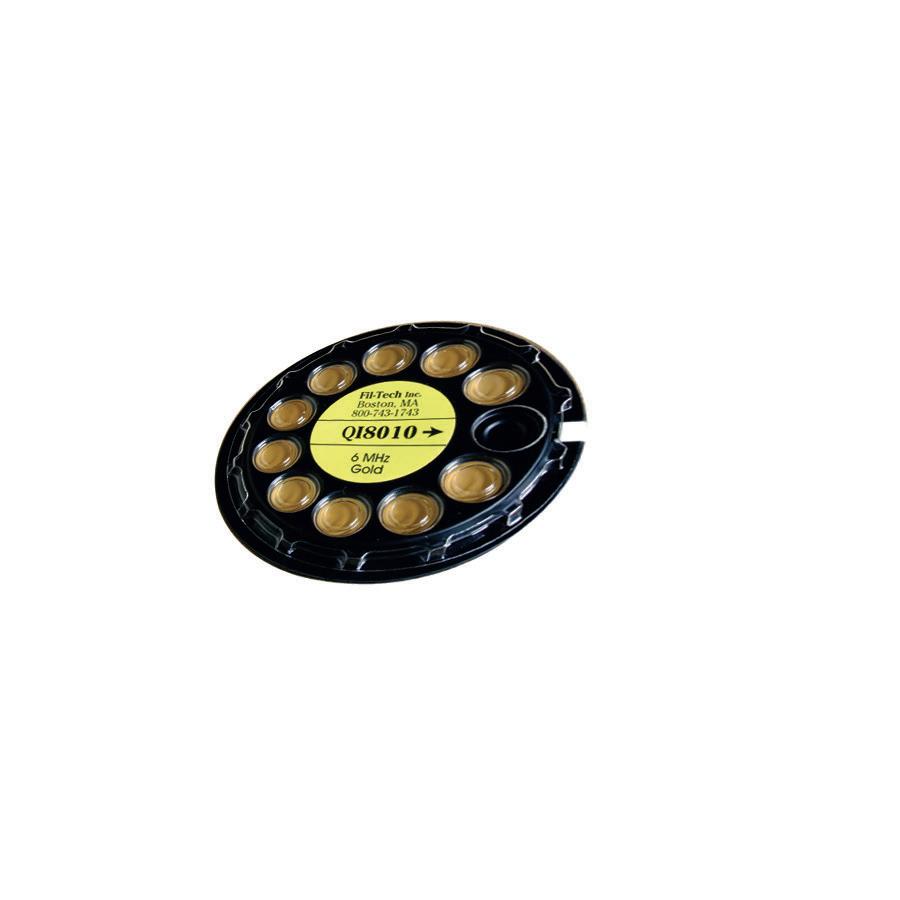



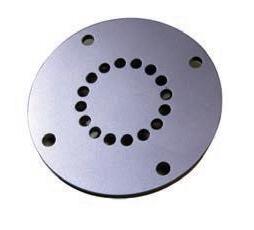
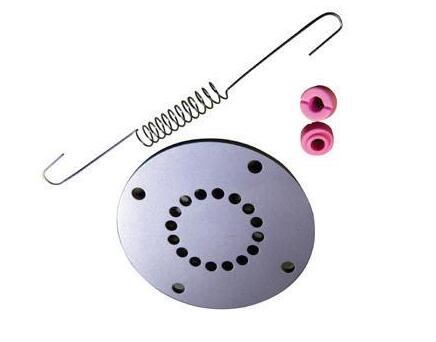





Lab Management
705 SILICONE DIFFUSION PUMP FLUIDS 617-227-1133 • 800-743-17 paula@filtech.com www.filtech.com SCAN FOR OUR FULL CATALOG QUAL SAVINGS FROM STOCK QUAL SAVINGS FROM STOCK QUALITY& SAVINGS FROM STOCK IONIZATION, THERMOCOUPLE & INSTRUTECH CONVECTION GAUGES INFICON RATE/THICKNESS CONTROLLERS & MONITORS Advertisement BUSINESS
704 &
Legend: Yes = x, No = /, Optional = o Generators
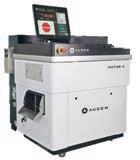
Small labs (less than 100 l/ shift)
Medium sized labs
(100 - 3,000 l/shift)
Mass production labs (more than 3,000 l/shift) Freeform x
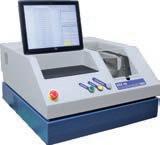
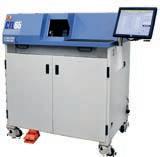
/ Turning]
Productivity (lenses / hour)
[MR8, 1.6, Ø 70, sph. -3,0, cyl. 2.0, Add. 2.5, private label]
Turning (single or twin tool holder) Balanced dual swiveling tool for roughing and finish
Further information
Robust plug and play generator; follows NURBS freeform designs, spheric and atoric surfaces
Tabletop, dry cut generator for small/mid-sized labs. Upgraded user interface on Windows 7, with USB loading + backups
Compact turning lathe. Patented single-point technol. for conventional lenses. Small/mid-sized labs. Fastest in its class
Augen Opticos Coburn Technologies www.augenopticos.com/tec www.coburntechnologies.com
Victor IV
Application
SGX Pro Surface Lens GeneratorCTL65 Compact Lens Generator
x x
x
Lens materials All organic materials CR39, Polycarbonate, Trivex, High Index Lens diameter (mm) 100 90 90 Curve range concave (dpt) [Milling
NA /- 20 with no tool change -30 -20 Curve range convex
[Milling
NA / + 20 with no tool change 8 7 Technical data
/Turning]
(dpt)
30 contact Coburn Technologies Speed of motor spindle (RPM) 3.000 3000 3500 Axis 4 3 4 Port/Interface configuration M = Multiple | OA = Open architecture M: Augen XML / OMA OA OA Weight (kg / lbs) 550 / 1210 125 / 275 590 / 1300 Dimensions (w x d x h) / [ mm / inches] (machine without conveyor) 1100 x 1100 x 1200 / 43 x 43 x 47762 x 711 x 788 / 30 x 28 x 311194 x 787 x 1295 / 47 x 31 x 51 Process Milling / x o
milling turning - single cutter Polishing / / / Laser engraving / / / Automatic lens loading/unloading / / / Blockless / / / Dry cutting / x x Alloy free / x x Pre-shape / / / Features Auto calibration Calibration on diamond change only / / Barcode scanner X o o
design
X / / Process
X x x
Data protection/encryption
and macros
data information
MAFO 3-24 38 MARKET SURVEY
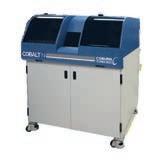
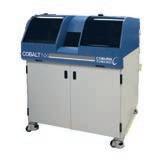
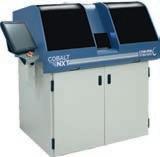
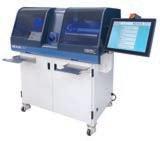

Combines features from a CTL65 and Cobalt generator. Upgradable to a freeform capable Cobalt NX
For superior quality lenses in terms of form and finish. Expandable platform that can grow with your business
For superior quality lenses with the option for automation, as well as the option for automated calibration
For superior quality lenses. With option for automation and for automated calibration. 50% faster than Cobalt NXT
Spherical glass only, 180 lenses/h, single surface or double surface (two machines with automatic lens transfer)
Coburn Technologies Comes www.coburntechnologies.com www.comes.it
GeneratorCobalt NX Lens Generator Cobalt NXT/NXT+ Lens Generator NEXUS DGT Lens GeneratorGentronic-CNC / x x x x x x x x x x x / CR39, Polycarbonate, Trivex, High Index Glass 90 90 90 90 80 -20 -20 -20 -20 10 /7 7 7 7 10 /contact Coburn Technologies4000 4000 4000 4500 10500 4 4 4 4 3 OA M / OA M / OA M / OA 590 / 1300 622 / 1372 642 / 1415 642 / 1415 700 / 1550 1245 x 914 x 1473 / 49 x 36 x 58 1245 x 914 x 1473 / 49 x 36 x 581422 x 914 x 1651 / 56 x 36 x 65 1346 x 775 x 1600 / 53 x 30.5 x 63 810 x 1260 x 1850 / 31.89 x 49.61 x 72.83 o o o o x turning - single cutter turning - two cutters / / / / / / x x x / / o o x / / / / x x x x x / x x x x / / / / / / o o o / o o o o / / / / / x x x x
Cobalt
N Lens
MAFO 3-24 39 MARKET SURVEY



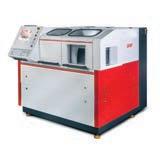
labs (less than 100 l/ shift)
sized labs (100 - 3,000 l/shift)
Mass production labs (more than 3,000 l/shift)
Productivity (lenses / hour) [MR8, 1.6, Ø 70, sph. -3,0, cyl. 2.0, Add. 2.5, private label]
o Generators Comes www.comes.it Labor-2 Small Impact HDG Impact Series Application
x x x /
x x / x
x x / x Freeform / / x x Lens materials Glass Glass / Organic Organic Organic Lens diameter (mm) 120 90 85 85 Curve range concave (dpt)
12 / - 30 / - 30 / 30 30 / 30 Curve range convex (dpt)
12 / - 30 / - 30 / 30 30 / 30 Technical data
Legend: Yes = x, No = /, Optional =
Small
Medium
[Milling /Turning]
[Milling / Turning]
-Speed of motor spindle
5500 27000 - 27000 Axis 4 3 3 3 / 4
M = Multiple
OA
architecture Weight (kg / lbs) 1400 / 3100 620 / 1360 800 /1760 2000 / 4400 Dimensions (w x d x h) / [ mm / inches] (machine without conveyor) 1560 x 1550 x 1890 / 61.4 x 61 x 74.41 1190 x 1660 x 1585 / 46.85 x 65.35 x 62.4 965 x 1300 x 1500 / 38 x 51.18 x 59.06 1700 x 1700 x 1550 / 66.93 x 66.93 x 61 Process Milling x x / x Turning (single or twin tool holder) / / x x Polishing Laser engraving ** ** Automatic lens loading/unloading o / / o Blockless o / / / Dry cutting / / / / Alloy free Pre-shape / * o* * Features Auto calibration / / / / Barcode scanner o o o o Data
Process
Further information * elliptical reduction* elliptical reduction; ** mechanical engraving optional MAFO 3-24 40 MARKET SURVEY
(RPM)
Port/Interface configuration
|
= Open
protection/encryption design and macros
data information


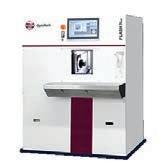

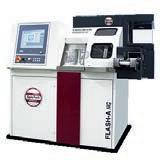
All organic lens materials
53-80 (after cribbing)
concave - 12 diopters
Front base range 0 - 9 (only spherical front curve, index 1,53)
to 50 lenses/h
5 on the generator, 3 for each polishing station, plus handling
Power matching, front mapping, washing, no tape, prismatic lenses
lenticular and blended bifocal software on request
optional cribbling spindle for small lens diameter; lenticular and blended bifocal software on request
OptoTech
www.optotech.net/en CoreTBA FLASH Store FLASH Plus FLASH-A Plus FLASH-A NG x x x x x x / x x x x x x
all organic materials
40 mm - 85 mm
- 17 dpt. / -17 dpt. (70mm, n=1.600)
MEI
www.meisystem.com
+ 30 dpt. / +30 dpt. up
35 lenses / hour 55 lenses / hour 60 lenses / hour 80 lenses / hour 33000 12000 rpm 18000 rpm 32000 rpm
4 M M 2500 kg 1050 kg 1850 kg 2750 kg 2150 x 2150 x 2500 1280 x 1330 x 1680 mm 1700 x 1925 x 1925 mm 1735 x 1975 x 1740 mm x 1 1 1 1 x twin tool holder x / / / / x / / / / x / / x x x / / / / x / / / / x / / / / x x x x x x / / / / x o o o o / / / / / x o o o o
MAFO 3-24 41 MARKET SURVEY
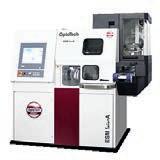


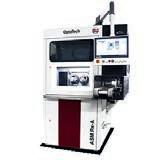
Small labs (less than 100 l/ shift)
Medium sized labs (100 - 3,000 l/shift)
Mass production labs (more than 3,000 l/shift)
Legend: Yes = x, No = /, Optional = o Generators
Curve range concave (dpt) [Milling /Turning] - 17 dpt. [Milling] -17 dpt .[Turning]
Curve range convex (dpt) [Milling / Turning] + 30 dpt. [Milling] +
Productivity (lenses / hour) [MR8, 1.6, Ø 70, sph. -3,0, cyl. 2.0, Add. 2.5, private label] 150 lenses / hour 120 lenses/h
up to -23 dpt. (Index 1.800) [Milling]
up to -15 dpt [Milling]
Mineral freeform milling of up to 60 lph; Organic freeform milling of up to 200 lph; (dep. on production mix) 10 mineral glass lenses/h Speed of motor spindle (RPM)32000
Dimensions (w x d x h) / [ mm / inches] (machine without conveyor)
OptoTech www.optotech.net/en ESM Twin-A FLASH Twin-A SWARFMASTER ASM Rx-A Application
x x
x x x Freeform x x x x Lens materials all organic materials all organic materials and mineral glass mineral glass Lens diameter (mm) 48 mm - 85 mm 40 mm - 85 mm 50 mm - 70 mm
Mineral:
Organic:
40 mm - ∞ (with standard tools) + 12 dpt. - plano Technical data
30 dpt. [Turning] +30 dpt. [Milling]
rpm 32000 rpm Axis 5 6 3 4 Port/Interface configuration M = Multiple | OA = Open architecture M Weight (kg / lbs) 1900 kg 2200 kg 1250 kg 1850 kg
1944
Process Milling 2 tools / 1 Grinding/Milling Tool 3 Grinding/Milling Tools Turning (single
tool holder) / 2 Twin Holder (Fast-Tools) / / Polishing / / / / Laser engraving / / / / Automatic lens loading/unloading x x x x Blockless / / / / Dry cutting / / / / Alloy free / / / / Pre-shape x / / / Features Auto calibration / / / / Barcode scanner o o o o Data
design
/ / / / Process data information o o o o Further information manual version available MAFO 3-24 42 MARKET SURVEY
x 1886 x 1955 mm1785 x 2380 x 1940 mm1365 x 1865 x 2076 mm1275 x 2035 x 1720 mm
or twin
protection/encryption
and macros

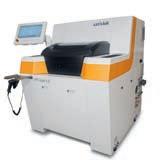

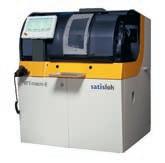

2200 /
2300 / 5070 with automation. 2190 / 4828 w/o
mechanical engraving as an
Integrated Topography Measurement. Lab 4.0 ready. MES-360 Lite included. Performance Package optiona. available
Integrated Topography Measurement optionally available The HSC nano XP offers a higher performance, offering full milling capabilities for fast PC machining and a high-speed laser.
Satisloh Schneider
www.schneider-om.com VFT-orbit-2i VFT-orbit-2E VFT-macro VFT-macro-E HSC nano XP / / x x x x x x / x x / / / x x x x x all organic materials all organic materials + mineral CR39, Polycarbonate, Trivex, Tribrid, High Index Plastic up to 90 mm up to 85 mm up to 92 mm Depending on tool diameter -14,5/-30 -14,5 -30 +30/+30 / / +30 up to 120
up to 70 lph up to 50 lph up to 25 lph Please consult with Schneider 35000 24000 12000 only cribbing 9,000 5 4 3 4 M/OA various
800 / 1764 750 / 1,653 1270 x 1501 x 1832 / 50 x 60 x 72 1100 x 1200 x 1500 / 43 x 47 x 59 900 x 1120 x 1030 / 35 x 44 x 41 x x x / x single; 2nd fast-tool optional twin twin / / / / /
option x x o / / / / / / / / / / / / / x x x x / x x x / x x x x x / x x o o x x x / / design
x x x x
www.satisloh.com/ophthalmic
lph
4850
automation
x
MAFO 3-24
Generators

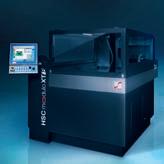


Small labs (less than 100 l/ shift)
Medium sized labs (100 - 3,000 l/shift)
Mass production labs (more than 3,000 l/shift)
Lens materials
/Turning]
/ Turning]
(dpt)
Productivity (lenses / hour)
[MR8, 1.6, Ø 70, sph. -3,0, cyl. 2.0, Add. 2.5, private label]
Port/Interface configuration M = Multiple | OA = Open architecture
Polycarbonate, Trivex, Tribrid, High Index Plastic
Please
Data protection/encryption design and macros design
Further information
Legend: Yes = x, No = /, Optional = o
Offers a higher performance than HSC sprint. A small, economical generator. Ideal for smaller and mid-sized labs.
The fastest generator in the market. Its extremely powerful XS-motor produces the best lens in the shortest time
The all-in-one surfacing center features the technology to surface 80 lenses/h, in just 7 m². Blank in, surfaced lens out
HSC modulo ONE virtually combines the power of two generators. It produces best lenses at lowest cost per lens.
HSC sprint X HSC modulo XTS Modulo Center ONEHSC modulo ONE Application
Schneider www.schneider-om.com
x x x
x x x x
x x x
x x x x
Freeform
Lens diameter (mm) up to 85 mm up to 96 mm up to 90 mm up to 96 mm Curve range concave (dpt) [Milling
-30 -18 -30 Curve range convex
+30 0 +30 Technical data
CR39,
[Milling
Speed of motor spindle (RPM) 12,000 35,000 25,000 35,000 Axis 4 4/5 22 7/8
consult with Schneider
various Weight (kg / lbs) 750 / 1,654 2250 / 4960 5150 / 11354 3099 / 6832 Dimensions (w x d x h) / [ mm / inches] (machine without conveyor) 1360 x 930 x 1200 / 52 x 37 x 48 1600 x 2020 x 1715 / 63 x 80 x 68 3200 x 2167 x 2350 / 126 x 86 x 93 1685 x 2150 x 1993 /67 x 85 x79 Process Milling x x x x Turning (single
holder) twin single twin Polishing / / x / Laser engraving / / x / Automatic lens loading/unloading / x x x Blockless / / / / Dry cutting / / / / Alloy free / x x x Pre-shape x x x x Features Auto calibration x x / x Barcode scanner x x x, or optionally RFID x
or twin tool
Process data information x x x x
MAFO 3-24 44 MARKET SURVEY
Suppliers Guide











Bühler Alzenau GmbH Business Area Leybold Optics Siemensstrasse 88, D-63755 Alzenau T + 49 (0) 6023 500-0, F + 49 (0) 6023 500-150 leyboldoptics@buhlergroup.com www.buhlergroup.com

Coating equipment UV Curable Hard Coat Adhesion On All Lenses Tintable Non-Solvent Based AR Coating Compatible Sales, Distributors Wanted Shipping Worldwide www.hcoating.com sales@hcoating.com


paula@filtech.com



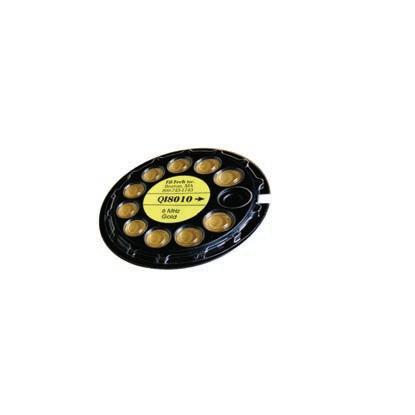

HARD COAT LEADER 271 rue Laszlo Biro Archparc FR-74160 Archamps Phone : +33 (0) 450 820 720 Email : office1@scl-intl.com scl-intl.com HARD COATING CLEANING TINTING CONSUMABLES EXPERTISE Cleaningad: World leaders in Lens Hard Coating Machines and process solutions Full range available for any production volume Expert advice on your application World leaders in Ultrasonic Cleaning Machinesprior to lens coating Full range available for any lens volume Expert advice on your application Contactusfor our full range: +44 (0) 1462491616 sales@optimal-technologies.com www.optimal-technologies.com sales@optimal-technologies.com optimal-technologies.com contact us: (+44) 1462 49 16 16 optics@fisa.com www.fisa.com Pub FISA - Optical World 88x40.indd 1 14/12/2021 16:49 Cleaning and hard coating equipment
The Suppliers Guide is MAFO’s version of Yellow Pages. In it you can find an overview of suppliers from the fields of: ▶ cleaning and hard coating equipment ▶ coating equipment ▶ crystals ▶ laser engraving & printing ▶ lens surfacing machinery
lenses
machinery – automation, control & packaging
machinery – lens edging & industrial edging ▶ software
surfacing and finishing consumables
you are interested in an entry in the Suppliers Guide,
▶
▶
▶
▶
If
please contact Mrs. Classen: constanze.classen@mafo-optics.com
QUALITY & SAVINGS FROM STOCK QUALITY & SAVINGS FROM STOCK QUALITY & SAVINGS FROM STOCK
• Sensor Heads and Feedthroughs • INFICON Deposition Monitors and Controllers • Quality Crystals® • Vacuum Pump Fluids • Vacuum Measurement Gauges • Electron Beam Gun Parts • Ion Source Parts 617-227-1133 • 800-743-1743
Crystals MAFO 3-24 45
www.filtech.com
Suppliers Guide


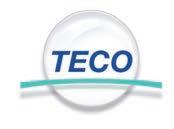
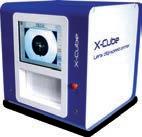







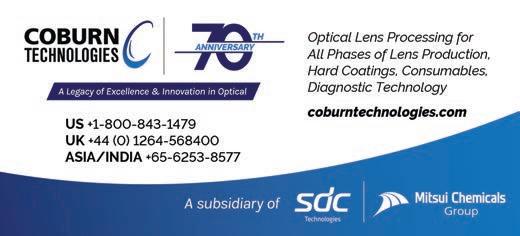













































Satisloh AG Neuhofstrasse 12
CH - 6340 Baar / Switzerland
Phone: +41 (0) 41766 16 16
Email: info@satisloh.com satisloh.com



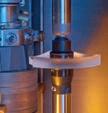

Sandusweg 2-4 • 35435 Wettenberg/Germany
Tel.: + 49 641/98203-0
eMail: info.de@optotech.net Web: www.optotech.net



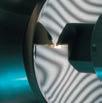









SCHNEIDER GmbH & Co. KG



Biegenstrasse 8–12 · 35112 Fronhausen · Germany
Phone: +49 (64 26) 96 96-0 · Fax: +49 (64 26) 96 96-100 www.schneider-om.com · info@schneider-om.com
Lenses










OPTICAL MANUFACTURING
SOLUTIONS
!AZ.indd 9
Optical Machinery. Processing Technology. OptoTech Optikmaschinen GmbH
!AZ.indd 2 Lens surfacing machinery Lens surfacing machinery Enjoy, • unlimited designs • digi-speed process www.tecofrance.com info@tecofrance.com Choose your frame colour White Green Blue Red Cyan Purple X-Cube Lens Digi-speed Printer PUB_TECO-Juillet 2016.indd 1 25/07/16 17:59 26.07.16 14:56 Laser engraving & printing Premium-Quality Laser Engraving of Spectacle & Contact Lenses Industry approved since 2004 www.ophthalmic-marking.com 30.11.20 12:42
Machinery - Automation, Control & Packaging Lens Quality Control Automation Process Control Services & Solutions BELGIUM - THAILAND - USA - LATIN AMERICA www.ar.be MAFO 3-24 46
Guide
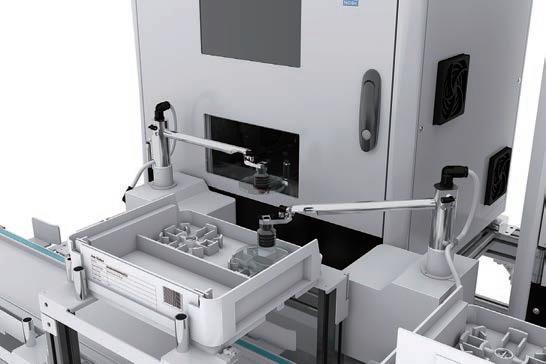






Software Surfacing and finishing consumables Surfacing and finishing consumables The Lab Management System Company LensWare International GmbH Robert-Bosch-Str. 32 63225 Langen - Germany Phone : +49 6103 / 372 87 87 Email : info@lensware.de Web : www.lensware.de Your lens design and innovation experts IOT exists to empower independent labs and ECPs to create the best lenses in the world. 20 avenue Reille - 75014 PARIS - FRANCE T l. : +33 (0)1 45 89 84 44 - Fax : +33 (0)1 45 89 66 54 contact@agp-abrasifs.com - www.agp-abrasifs.com GENERATING POLISHING EDGING Machinery - lens edging & industrial edging www.nidek.com info@nidek.co.jp Combination of dynamic ideas and stable performance provides superb Lens Edging MAFO_AD 88 x 40 mm_Bleed 3mm Suppliers
Find out more: mafo-optics.com SAMPLE incl. presence in the MAFO online Suppliers Guide 1 module (88 x 40 mm) per year with company logo 4c = € 990 p.a. Contact: constanze.classen@mafo-optics.com YOUR ULTRA PRECISION Diamond Tools Manufacturer > Compliant with any generator > Excellent service and quick turnaround ky diamond.ca sales @ kydiamond.ca !AZ.indd 3 !AZ.indd 6 TECHNOLOGY AT IT’S BEST –FOR OPHTHALMIC LABS & INDUSTRY OPHTHALMIC LABS & INDUSTRY HOME OF YOUR BUSINESS SG_Eyepress.indd 1 30.01.20 16:41 MAFO 3-24 47

TVisual acuity testing on a beer mat
Even in ancient times, visual acuity testing was one of the most important tasks when choosing a profession. Up until the Middle Ages, it was just a simple eye test, with no numerical assessment; it was enough to recognize a constellation in the sky, a target in the landscape or to distinguish a row of trees. Recognizing the church clock was also a popular eye test from the 16th century onwards.
It was only with the increased demands on visual acuity, for example in shipping, that it became necessary to standardize eye tests and, above all, to make them more precise before a captain was entrusted with a ship.
By Dr. Hans-Walter Roth
he first simple visual acuity tests were also used by the military in ancient times. In practice, it was then possible to quickly determine whether a soldier would be an accurate archer; if he was impaired due to short-sightedness, at least the possibility of using him in close combat remained. For a monk or librarian, short-sightedness was ideal; he was suitable as a scribe from the outset and therefore unsuitable for military service. The reverse was true for the hunter, who had a clear advantage with farsightedness, especially when hunting at night, because as a hyperopic he was a good shot, but he was not suitable for distinguishing whether a herb was beneficial or harmful, especially in old age.
Painters such as Rembrandt and Rubens in particular reveal their farsightedness in the size of their paintings. Spitzweg, who was highly short-sighted, restricted himself to the small format, just like the miniature painters of his time. Myopia was also an advantage for the jeweler or watchmaker, as visual aids such as glasses or, more recently, contact lenses have only been known since modern times and were not affordable for everyone.
At the latest with the industrialization and further development of transport and the beginning of motorization, it became necessary to standardize visual acuity tests and thus make them comparable. With the introduction of the meter, which was introduced internationally in 1799, the refractive anomaly became definable in diopters. The official visual acuity tests were now available at the ophthalmologist´s practice, the optician´s store or at the examination office. It was only in advertising that original eye tests such as the one on the picture for near vision could still be found.
Today, all visual acuity tests are internationally standardized, and their values are defined in decimal numbers or fractions. Luminance, surroundings and font size are clearly defined. Color vision has its own history; it was
discovered after accidents caused by confusion between red and green. Railroads and aviation now require reliable color recognition. The idea for this beer mat is probably from the 1940s or 1950s. The visual test here is undoubtedly of an advertising nature. The font size, read from 33 cm, corresponds approximately to size 5 in the Nieden near vision test, but the ability to drive a motor vehicle safely should not be inferred from this.
What remains unnoticed is that visual acuity decreases exponentially under the influence of alcohol. If you could no longer read the green text on the gray coasters, you were no longer fit to drive, your glasses were too weak for close up, or, more likely, your beer consumption was simply too high. On the back of the cardboard cover should have been the sentence: “if you can no longer read the text, then ask the landlord at the bar.” You can still occasionally find original items like this at flea markets. This beer mat, still unused, was purchased for one euro for the collection. ◆
 Dr. Hans-Walter Roth
Dr. Hans-Walter Roth
Ophthalmologist and Director of the Contact Lens Research Institute in Ulm, Germany, is the author of numerous publications and books on the physiology of the contact lens and the history of eyesight. He is a city councilor of the city of Ulm, specializing in education, social affairs, art and culture. He is also the founder of the Ulm Hospital for the Poor.
MAFO 3-24 48 HISTORY
Closing with good news!
“We can almost always prevent blindness from ROP”
Retinopathy of prematurity (ROP) – a vascular disease of the retina that is limited to premature infants – is a leading cause of blindness in children. But there exist significant disparities in outcomes between high-income and low-income countries, partly due to insufficient access to ROP screening. However, artificial intelligence (AI) technology has now been shown to accurately and independently detect 100% of severe cases of ROP. This AI could therefore expand global screening and thus also sight-preserving treatment for ROP.
“ROP is the leading cause of blindness in children in the U.S. and around the world, and perhaps the most solvable problem among many in global efforts to reduce preventable blindness,” said the study’s corresponding author, J. Peter Campbell, “Although we cannot fully prevent ROP, we can almost always prevent blindness from ROP.”

Special topics in

“Go Green!” This is the special topic of the upcoming issue 04/2024. For this magazine we will talk about, and inform you about, sustainable processes and sustainable products. We also present projects around the world that aim to provide suitable glasses for everyone – especially people with low incomes. And you will find an interview about the topic: what the perfect golf glasses should look like and why lens manufacturers' solutions are often not perfect.
MAFO 3-24 49 OUTLOOK
MAFO 03 Future Lab MAFO 01 MAFO 05 Go Digital! MAFO 02 Smart Technologies MAFO 04 Go Green! MAFO 06 Markets Worldwide Lab Management
MAFO
Preview MAFO 04/2024
2024


PUBLISHERS ADDRESS
Eyepress Fachmedien GmbH
Saarner Str. 151, D-45479 Muelheim a. d. Ruhr
Tel.: +49-208-306683-00
Fax: +49-208-306683-99
Website: www.mafo-optics.com
E-mail: info@mafo-optics.com
CEO Petros Sioutis
E-mail: p.sioutis@eyepress.de
PUBLISHER
Silke Sage, Petros Sioutis, Efstathios Efthimiadis
FOUNDED 2003 by Jörg Spangemacher
BANK DETAILS
Bank account: Sparkasse Aachen
Bank No.: 390 500 00, Acc. No.: 1073 3925 06
IBAN: DE21 3905 0000 1073 3925 06
SWIFT: AACSDE33XXX
CHIEF-EDITOR
Hanna Diewald
E-mail: hanna.diewald@mafo-optics.com
EDITORS
Rebekka Nurkanovic
E-mail: rebekka.nurkanovic@mafo-optics.com
Britta Laupichler
E-mail: britta@mafo-optics.com
TRANSLATIONS
John Saniter, Bopfingen
EDITORIAL BOARD
Jörg Spangemacher, Peter Baumbach, Mo Jalie


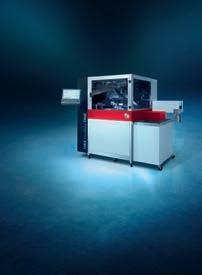




































PRODUCTION & LAYOUT
Efstathios Efthimiadis, Pascal Bruns
E-mail: production@eyepress.de
DISTRIBUTION
PressUp GmbH, Postbox 70 13 11, D-22013 Hamburg
Tel.: +49-40-386666-308, Fax: +49-40-386666-299
MEDIA CONSULTANT
Constanze Classen
Tel.: +49-208-306683-20
E-mail: constanze.classen@mafo-optics.com
ADVERTISING AGENT GREAT CHINA
Beijing FOCUS Optics Culture Communication Co. Ltd. Room 319, Building 2, Nr. 1, Northbank 1292, Nr. 15
J ianguo Eastroad, Beijing 100024 (Chaoyang), P.R. China
Mrs. Jian Wang
Tel.: +86-10-8537-6529
Email: jennywang_focus@126.com
Skype: jennywang611
焦点视光(北京)文化传播有限公司
北京市朝阳区建国东路15号院甲一号北岸1292
二号楼319室 邮编:100024
电话:+86-10-8537-6529
电邮:jennywang_focus@126.com
ADVERTISEMENT RATES
Price list no. 20, valid from January 01, 2024
Publication schedule
6 issues 2024: January, March, May, July, September, November
SUBSCRIPTION COSTS PER YEAR
European Union € 1 40,00
(plus VAT for German companies)
Overseas Seamail € 160,00
Overseas Airmail € 195,00
United States Seamail € 170,00
United States Airmail € 2 25,00
Single issue € 20,00 (plus mailing costs)
The Publisher requires three months written notice on cancellation. Subscribers please note that proof of notice may be required.
PHOTO CREDITS
P.10: nikonlamp, P.14: Olga Zarytska, P.26: JoPanwatD, P.34: rzoze19 /stock.adobe.com, /unsplash.com, /envato.com
PRODUCTION & PRINT
Kollin Medien GmbH, Neudrossenfeld, Germany
The publisher takes no responsibility for unsolicited manuscripts. Please note also that photographs submitted for use in MAFO cannot be returned. The publisher’s written permission is required for any reproduction, translation or recording of material published in MAFO, including extracts of such material. Permission will normally be given, subject to the usual acknowledgement. Copies made of published items must be limited i n number and for personal use only.

2/2024 Special topic: Smart Technologies successful in the future Adaptive smart glasses for future? devices as the next computing platform ▶ Live on site Great atmosphere at this year's MAFO –The Conference Mido 2024 back in force Opti successful start to the new optical year Market Surveys Industrial edger Business Risk management strategic and structured Volume 20 OPHTHALMIC LABS & INDUSTRY Germany Connect, discover, stay up-to-date $ $ $ dynamic format allowing labs to update job information on the fly while retaining all the advantages of satisloh.com Instant visibility into real-time job status make efficient decisions. DYNAMIC SUSTAINABLE SCALABLE Risk-free, step-by-step implementation your needs grow. COST-EFFECTIVE Reduces lab operating expenses Reusing E-Ticket Tags, significantly reduces paper ink E-TICKET SYSTEM BETTER THAN PAPER! Contact us to learn how the E-Ticket System can streamline your operations! $ 1/2024 Special topic: Future Lab Digitalization and the Internet of Things optical coatings Technology Prismatic lenses for visually impaired people Smart Glasses: a visit to the open Interview Mido 2024: “We feel responsible to make culture!” Spotlight Ray-Ban Meta glasses: What can they do, and what not? Market Survey Cleaning machinery Volume 20 OPHTHALMIC LABS & INDUSTRY Germany Connect, discover, stay up-to-date With DBX Modulo ONE, SCHNEIDER debuts powerful and fully automated new lens deboxer for high throughput, 24/7. The innovative technology unpacks all common kinds of boxes and materials – cardboard, blisters, even sleeves After swiftly identifying the type of box, DBX Modulo ONE opens it “naturally”: It unfolds, takes out and unwraps, entirely without touching the lens surface. SCHNEIDER‘s eco-friendly process avoids cutting or burning the material using sharp blades or high energy lasers – no cutting particles or dust and no fumes. All waste material is separated and collected individually to simplify recycling and further increase sustainability. DBX Modulo ONE follows SCHNEIDER‘s vision to provide the full solution for ophthalmic labs, from warehousing all the way to inline coating and beyond. Ophthalmic lens production fully-automated and entirely hands-free. SEE IT LIVE AT MIDO // 03. 05. February 2024 // Hall 6 // Booth T32 DBX m dulo Environmentally friendly Unboxing any kind of box THE NATURAL WAY OF DEBOXING 6/2023 Special topic: Go Digital! Lens production going digital AI´s new language for the industry Technology Overcoming the gas age A breath of future at VEW 2023 Silmo Paris 2023 Market Survey Lens printing Laser engraving systems Volume 19 OPHTHALMIC LABS & INDUSTRY Germany Connect, discover, stay up-to-date VFT-ORBIT-2 MAXIMUM PERFORMANCE MEETS AI TRULY SMART LENS GENERATING Witness what happens when unmatched lens generator performance ultra-fast milling, voice coil technology & auto-calibration meets the power of AI in the new VFT-orbit-2i. With the seamless integration of Artificial Intelligence & Machine Learning, we´re revolutionizing ease with advanced diagnostics and predictive maintenance. Contact us for more details on VFT-orbit-2i Minimizes unexpected break- Delivers diagnostic data to MES-360 Lite included to 5/2023 Special topic: Sustainable Processes A broad vision of sustainability all‒, only raw materials!” Technology Anti-reflex coating and process control Thickness and weight of ophthalmic lenses One drop and you regain the vision of 20-year-old? Market Survey AR-Coating machinery Volume 19 OPHTHALMIC LABS & INDUSTRY Germany Connect, discover, stay up-to-date With DBX Modulo ONE, SCHNEIDER debuts powerful and fully automated new lens deboxer for high throughput, 24/7. The innovative technology unpacks all common kinds of boxes and materials cardboard, blisters, even sleeves –After swiftly identifying the type of box, DBX Modulo ONE opens it “naturally”: It unfolds, takes out and unwraps, entirely without touching the lens surface. SCHNEIDERs eco-friendly process avoids cutting or burning the material using sharp blades or high energy lasers no cutting particles or dust and no fumes. All waste material is separated and collected individually to simplify recycling and further increase sustainability. DBX Modulo ONE follows SCHNEIDERs vision to provide the full solution for ophthalmic labs, from warehousing all the way to inline coating and beyond. Ophthalmic lens production fully-automated and entirely hands-free. DBX m dulo Environmentally friendly Unboxing any kind of box THE NATURAL WAY OF DEBOXING Missed an issue? No problem, view the latest issues online: app.mafo-optics.com
MAFO 3-24 50 MASTHEAD

CBIII LAYER COAT PHOTOCHROMIC LENSES



NEW GENERATION
TRULY SMART LENS GENERATING

VFT-ORBIT-2
i MAXIMUM
PERFORMANCE MEETS AI
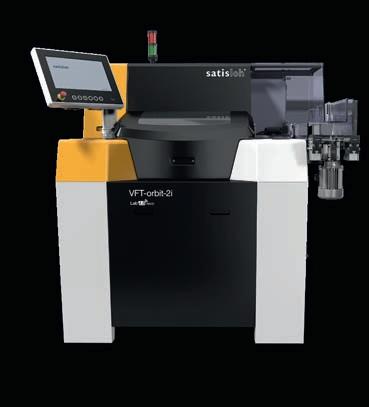
Witness what happens when unmatched lens generator performance - ultra-fast milling, voice coil technology & auto-calibration - meets the power of AI in the new VFT-orbit-2i. With the seamless integration of Artificial Intelligence & Machine Learning, we´re revolutionizing ease with advanced diagnostics and predictive maintenance.
Minimizes unexpected breakdowns due to AI powered predictive maintenance
Delivers diagnostic data to best analyze performance and identify issues
Contact us for more
MES-360 Lite included to establish KPIs & track machine utilization, throughput, errors
satisloh.com SMART CONNECTED INTEGRATED
details on VFT-orbit-2i!



 Hanna Diewald Chief editor
Hanna Diewald Chief editor




















































 Franz-Josef Achatz
Franz-Josef Achatz

























































































































 Dr. Hans-Walter Roth
Dr. Hans-Walter Roth














